O-WEEK IN PHOTOS

See page 5


See page 5
New cameras in residence are meant to protect students by surveilling them.
Queen’s Housing and Ancillary services installed 75 additional camerasintheVictoriaHallresidence building over the summer. The new camera installations bring the total number of residence cameras in Victoria Hall to 83, as part of rising camera usage within residence buildings since 2020. The rise is intended to ensure the safety and protection of students.
The installation of these cameras is a crucial part of Queen’s University’s commitment to fostering an inclusive and safe environment, according to the Executive Director (Housing & Ancillary Services) Leah Wales’ statement to The Journal

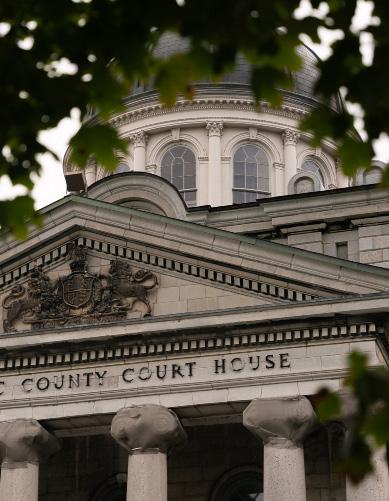

An employee who was fired from her advancement position alleged she was a victim of discrimination and said Queen’s University’s decision is a breach of her contract.
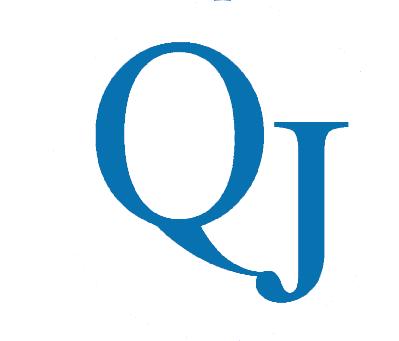
Sarah Roth, a Queen’s and Harvard alumna, began as the Executive Director of Development for the Faculty of Arts and Science in 2018, after having worked at Queen’s in various roles since 2007. In her role, Roth led an advancement team charged with communicating with the University’s major donors.
Roth was fired from her role at Queen’s this past April, four months before she was supposed
to resume working full-time after experiencing chronic pain related to a hip condition. A week after her termination, Roth underwent the surgery she’d been waiting on since 2021.
“I was terminated on April 20, which was 10 days before my surgery,” Roth said in an interview with The Journal “It was a very, very stressful event. It was a very stressful time because all I wanted to be doing was preparing for my surgery and getting all the walkers, and toilet seats, and all the things that [I needed].”
As recommended by her doctor, Roth went on leave due to her
condition in June 2021. In November that same year, due to immense pain and COVID-19 related delays of her surgery, Roth applied for long-term disability leave. Her leave lasted almost two years.
While on sick leave awaiting a hip replacement, Queen’s accused Roth of waitressing at Kingston restaurant Whiskey and Rosé. The accusation ended her access to employee benefits through Manulife in December of 2022, which was followed by Queen’s terminating her employment in April 2023.
“[Queen’s] reached out to me in March to arrange a meeting,” Roth said. “That was the first indication for me something was not going well or that I was not going to leave and return.”

During her leave as Executive Director, she worked at Queen’s as a coach, consulting with students on an as-needed basis for two hours
per week, being paid a fraction of her initial salary.
Roth alleged Queen’s fired her for failing to disclose alternative income and failing to notify the University of changes in her abilities, according to Roth’s Statement of Claim, which was obtained by The Journal
According to the Statement of Claim, Queen’s denied knowledge of paying Roth for coaching citing it as a reason to terminate her from her executive director role.
Roth reported being in considerable pain while awaiting surgery, which impacted her ability to work. An ex-varsity athlete, Roth considers herself to be resilient, but knew she had to pace herself given her disability.

“It got to a point where I couldn’t walk my dog. I was always having friends help me walk my dog,” Roth said.
With COVID-19 delaying surgeries, Roth continued coaching and purchased an investment property on Brock Street. Roth rented the property to friend and chef Amanda Finkle, who opened Whiskey & Rosé.
“I don’t work there—I never have worked there,” Roth said.

See Roth on page 5
“Since 2020, the number of cameras in our residences has been increased from 36 to 175. It is part of a long-term planning process that began with a sector scan to learn from the experiences at peer institutions,” Wales said.


The additional cameras installed in the Victoria Hall building have coverage of the building’s wings, and all entrances and exits to the building, including elevators and The Lazy Scholar.
Housing & Ancillary Services (H&A) finalized the plan in the spring of 2022 after evaluating past damages and student conduct in consultation with the Queen’s Records Management and Privacy Office, as well as Campus Security and Emergency Services.
“Cameras have been installed in Chown Hall and Endaayaan-Tkanónsote, and cameras will be installed in the renovated JDUC Residence when it reopens in fall 2024,” Wales added. Residence Life and Services surveyed students on their thoughts on video surveillance in the winter of the 2023 term, and the responses they received showed students supported camera usage.
There are strong guidelines regarding surveillance footage in residence buildings, created by the H&A Safety and Security Committee. The cameras are accessible to security and emergency services, and aren’t actively monitored, only being used in cases of incidents, according to the President of the Residence Society (ResSoc) Nathan Becker-Stetson.
Although not notified by Queen’s about the camera installation, students are made aware they are under surveillance by signs posted around Victoria Hall.
See Cameras on page 5
First year students who observe Shabbat moved into residences early this year for the first time.
Queen’s Hillel, an organization for Jewish students, worked in partnership with University administration to secure an early move-in date for students observing Shabbat on Sept. 1. The change allowed
students to fully participate in all the move-in day activities over the weekend.
“You miss out on all that stuff, like the first day at school and moving in with everybody else,”
Campus Director of Queen’s Hillel Yos Tarshish said in an interview with The Journal.
For observing Jewish families, activities such as driving long distances, exchanging money, or using electricity aren’t meant to be done during Shabbat. In the past, students observing Shabbat moved in after other students, leading families to reach out to Hillel to advocate for change.
Sixty students opted for early move-in, according to Hillel.
The following day on Sept. 2,
Asbah Ahmad
Editor in Chief
After experiencing Zoom bombings in 2021, Queen’s allegedly made a false criminal accusation against a student.
On Feb. 2, 2021, Jack*, a Queen’s student, attended a Zoom lecture titled, “The Present Life of Blasphemy: Kanye West in American Popular Culture.” Here, court records from Kingston Police show the Queen’s student was charged with mischief under
another 4,600 students moved into 17 residences across Queen’s campuses. For most first-years, move-in marked their first time away from home, which was accompanied by a rollercoaster of emotions.
“It was a pretty decent day, it was just very overwhelming. All the people, moving into a new place, and saying goodbye to my family was definitely hard,” Lauren Sayr, ConEd ’28, said in an interview with The Journal
Unlike previous years, the University organized for first-years to pick up keys at
the Zoom bombing included anti-Black, anti-woman, queerphobic, and antisemitic imagery.
Richardson Stadium to minimize COVID-19 stress associated with close contact. Sayr told The Journal her move-in ran smoothly, from volunteers helping her with bags to limited traffic on the way in, but the highlight was meeting new people.
“I really liked that on the day I met everyone on my floor because I made friends that night,” Sayr said.
Both University and student volunteers mobilized for move-in. The Residence Society (ResSoc) had 21 volunteers helping students move in, answering first year’s questions, and selling t-shirts.
“Move-in day is my favorite day of the academic year,” ResSoc President Nathan Beckner-Stetson said in an interview with The Journal.
Beckner-Stetson understands move-in day can be a “stressful time” and wanted to help first-years feel more comfortable on their first day at Queen’s.
“It’s important for us to start things off on the right foot with first year students and also get them engaged with their communities so they can have a good year moving forward,” Beckner-Stetson said.
the Criminal Code of Canada, and he was served a summons to appear on June 22, 2021. He filed a notice of action—the first step in a civil lawsuit—against Queen’s University on June 7, 2023.
“This was an online lecture in my religion course featuring a guest speaker from Yale. The lecture was going fine until all of a sudden videos of pornography and violence started being played on a shared screen,” Jack said in a statement to The Journal.
“It was extremely disturbing to me and I imagine everyone else in the lecture. It sounded like there were several people involved.”
In 2021, The Journal reported
In Jack’s notice of action filed against Queen’s University he contends the institution wrongly identified him as the individual responsible for the Zoom bombing. According to his filing, no one at Queen’s had any basis for making the allegation.
“Employees of Queen’s University knew any evidence it had weighed against Jack as a suspect of the Zoom bombing and expressed reservations about relying on it to proceed criminally,” the notice read.
Jack is claiming damages in the amount of $500,000 for negligence, and $73,569.85 in special damages with punitive damages amounting to $50,000.
Queen’s reported that Jack was the Zoom bomber and asked Kingston Police to proceed with criminal charges. Allegedly,
Queen’s prevented Kingston Police from determining Jack wasn’t responsible when its employees failed to provide the investigating officers with all the information they had.
The first time Jack learned about the allegations against him was in June 2021, when he was served the summons. On Aug. 20 of the same year, the University allegedly realized they wrongly accused Jack.
“The Zoom bombing itself was extremely traumatic and shocking to me, but being accused of it was even more devastating. It was traumatizing for me and my family. It has left a very negative feeling about my undergraduate experience and has affected my sense of trust in institutional power,” Jack said.
The Crown withdrew criminal charges against Jack soon after because there were no reasonable prospects of conviction.
“In all cases, the Crown
has an ongoing obligation to assess the strength of the case throughout the proceedings,” Ministry of the Attorney General Media Spokesperson Maher Abdurahman said in a statement to The Journal.
“If the Crown determines at any time that there is no longer a reasonable prospect of conviction, or that it is not in the public interest to proceed, the Crown is duty bound to withdraw the charges.” A university owes its students procedural fairness and a thorough and competent investigation, according to Jack’s civil filing. Instead, he alleges Queen’s jumped to a conclusion based on false assumptions and a careless investigation. Inastatement,Queen’sUniversity declined to comment as this is a pending legal matter.
*Name changed for anonymity.
Some staff and faculty at Queen’s have raised alarm bells about the University’s response to the hate-motivated stabbing at the University of Waterloo.
Staff and faculty across 18 departments sent an open letter to Principal Patrick Deane, expressing discontent with the University’s security protocols on Aug. 24. The concerns were raised following the hate-motivated stabbing at the University of Waterloo on June 28.
In the letter, faculty, and staff, who identified themselves as the Faculty and Staff Ad Hoc Committee on Community Safety, asked the University to implement a university-wide plan for responding to hate-based crimes. In an email response dated Aug. 25, which was obtained by The Journal, Principal Deane explained to faculty and staff he takes their concerns “very seriously and work
is underway.”
Deane hosted an open meeting for all staff and faculty to discuss the University’s current security and safety plans on Sept. 7. It was announced that Stephanie Simpson, vice-principal (culture, equity, and inclusion), will be implementing the Campus Security and Safety Initiative.
Samantha King, director of the School of Kinesiology and Health Studies, and an author of the open letter, was disappointed by Deane’s reply. King told The Journal her main grievance with Queen’s response is the absence of explicit acknowledgement the Waterloo attack was a targeted incident against the LGBTQ+ community.
“[The Faculty and Staff Ad Hoc Committee on Community Safety] have been discussing how [Queen’s] can better prepare and prevent similar incidents [to the attack at Waterloo],” King said in an interview with The Journal. “The [Queen’s] administration approach
to safety and violence has long been inadequate.”
In a statement to The Journal, Queen’s claimed to have recommended academic units not make course details publicly available. The University is auditing emergency signage and telephone connection in campus buildings and formed an ad hoc committee in June.
According to King, while an ad hoc committee had been formed under the leadership of the Provost, they haven’t been meeting regularly and the removal of identifying information of staff and faculty from online platforms has been applied unevenly among departments.
“There was one [ad hoc committee] meeting at which two members of [the Faculty and Staff Ad Hoc Committee on Community Safety] were summoned, but I don’t think [ad hoc committee meetings] have been regularized,” King said.
The open letter requested the university provide regular, centrally
funded, widely advertised, and accessible de-escalation and safety training for all instructors and staff beginning this September.
“Campus Security and Emergency Services (CSES) currently offers de-escalation training to provide employees with the skills to identify, respond to, and verbally de-escalate distress behavior in a safe, hands-off way. The university is exploring ways to expand this training to make it more widely available and accessible,” the University said.
While King has her reservations about the University’s security and safety protocols, she views the dialogue that has emerged since the publication of the open letter as a positive step forward.
“We need to keep pushing [for change]. There are a lot of things that still need to be addressed,” King said.
Members of Queen’s gender studies receive disturbing e-mail
This article incorrectly reported the nature of the Hate Crime Steering Committee’s follow-up with the University community. The story incorrectly spelled Dr. Sailaja Krishnamurti’s name. The word “radicalized” was incorrectly attributed in a quote to Melanie Murdock where she actually said “racialized.”
Welcome to Queen’s University
The crossword on page 15 was missing down clues and couldn’t be completed as intended.
Incorrect information appeared in the July 31 issue of The Queen’s Journal The Journal regrets the error.
With the school year in full swing, AMS President Kate McCuaig, Vice-President (Operations) Michelle Hudson, and Vice-President (University Affairs) Victoria Mills sat down with The Journal to discuss their goals for the upcoming year.
Reflecting on their summer term, KMV highlighted their accomplishments, specifically monetary compensation for students consulting with the AMS, additions to students’ health coverage, and building community among undergraduate students.
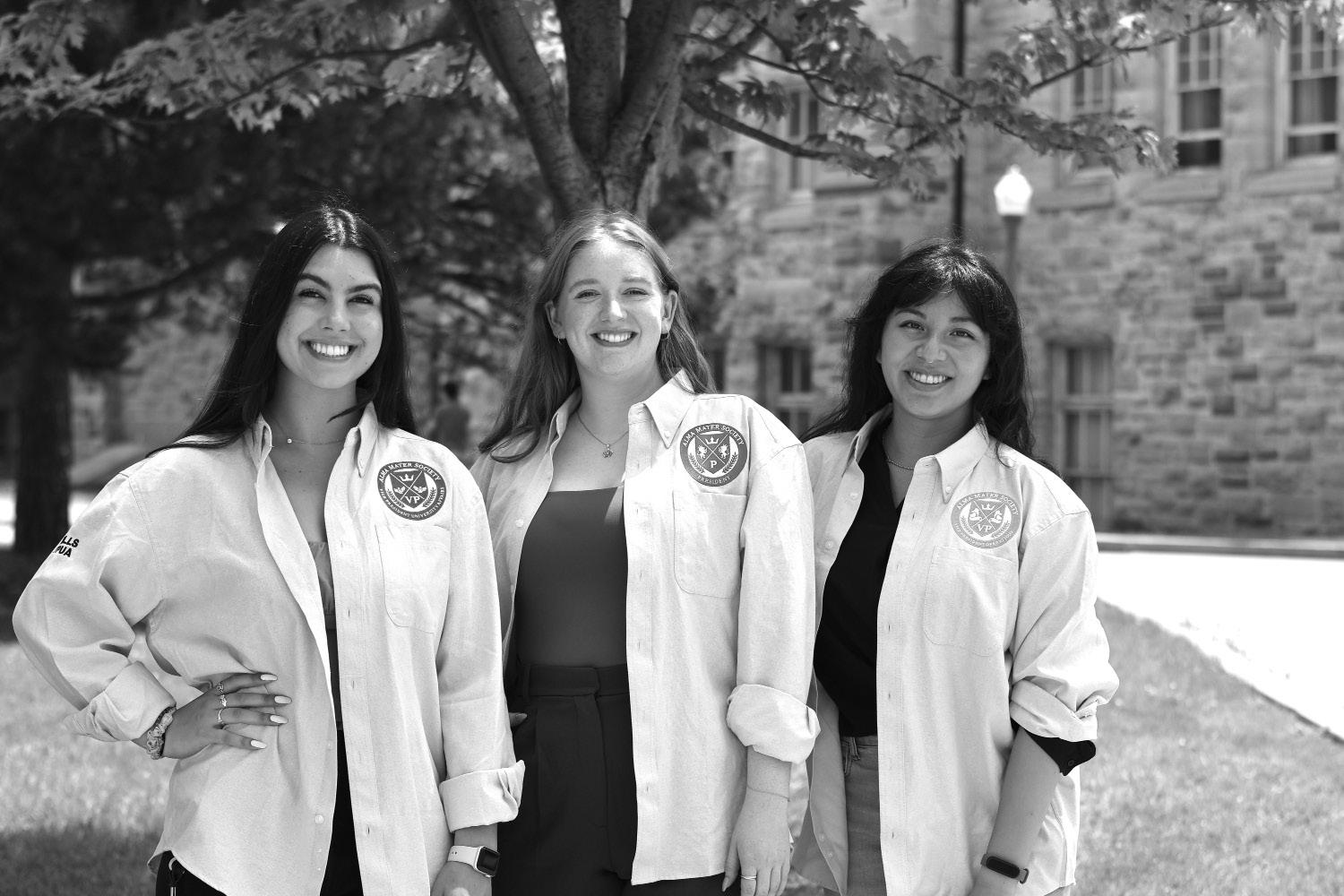
Students saw the return of EmpowerMe on Sept. 1, repealing the previous AMS mental health support platform, Console, a shift made by Team ETC last year. EmpowerMe provides mental health and wellness support for students, featuring 24/7 crisis support and one-on-one virtual therapy sessions.
“We found students wanted more one-on-one therapy access and EmpowerMe offered a greater range of students to be able to [access] that as opposed to Console,” Husdon said.
According to Hudson, students reported finding Console difficult to navigate prompting the AMS to discontinue its use.
McCuaig emphasized the importance of collaboration with Student Wellness Services (SWS), which many students rely on for health care while studying at Queen’s.
“For the student body making appointments, we’ve found the phone call itself is actually a really intimidating process of appointment booking. We’re working with [SWS] and updating them, to make sure they’re in alignment,” McCuaig said.
For KMV, a crowning achievement this summer was the health care travel bursary, funding transit for students unable to access specific health services in Kingston. The bursary covers students seeking gender affirming health care.
To include online students, KMV figured out the logistical kinks to allow Health Science students online to opt-in to the mandatory AMS student fee slate. The fee allows students access to AMS services, including health and dental care coverage. Mills told The Journal Arts and Science students online (ASO) are on KMV’s radar.
“Now we’re equipped with more knowledge about the processes, and a lot of the finer logistical aspects, we can have these conversations with ASO representatives, and we’re happy to do those kinds of things in the future,” Mills said.
Team KMV is putting emphasis on fostering face-to-face interactions with the Queen’s student body. KMV is actively engaging with students through attending orientation
events, visiting first-year residence buildings with commissioners, and introducing themselves to students.
“There’s nothing that replaces that face-to-face interaction with students,” Mills said. “We have some time aside to speak with first year students directly.”
To cater to the needs of students residing off-campus, especially those who live further away from the University district, KMV is being proactive.
The two key measures focus on providing advance notice for AMS events and promoting events in-person around campus.
“We need to be able to make sure that we’re giving people enough notice,” McCuaig said. “It’s impacting working students—I’ve held a student job my entire time at university and that’s a very common experience for most students. It’s about giving students the option to come.”
KMV changed their wristband distribution approach for the orientation mystery concert to consider all first-year students, regardless of where they are currently residing in relation to the university district.
“It’s going to every first-year student no matter where you live in relation to residence,” Mills said.
To promote AMS services, KMV explained they’re utilizing diverse social media platforms, and for students who do not follow AMS social media accounts, the team intends to put up posters on campus advertising in-person events.
Transparency
For Hudson, transparency is a priority.
KMV plans to make the AMS budget more accessible to students
by making it publicly available on their website and creating videos explaining their financial decisions line-by-line.
“Since students contribute financially through their AMS fees, we want to make sure the money is going to where they want it to go,” McCuaig said.
As part of KMV’s commitment to transparency, the team plans to sit down again with The Journal.
“We’ll be going over it line-by-line,” Hudson said. “I want to be very financially transparent, and I think that starts with [addressing] The Journal.”
Mills is focused on engaging students through AMS Assembly, which she called an “accountability measure” for the AMS. Assembly is the highest undergraduate legislative body consisting of student leaders who meet monthly to discuss student concerns and initiatives.
“AMS Assembly is open to all students. We want to tell them what that is, where it is, and when it is,” Mills said.
Part of engaging students in AMS Assembly means allowing them to come prepared. Mills stressed it’s an expectation for commissioners and other members of senior management to complete detailed reports in time for assembly.
“Considering [commissioners] roles are student facing, [reports are] an expectation,” Mills said.
Beyond assembly, McCauig hopes to show students what the day-to-day life of an AMS employee looks like on the AMS’ social media, bridging the gap between the general student body and their student government.
“We want to be able to show students our day-to-day operations
so they know what their student leaders [are doing],” McCuaig said.
Staff Training and Appreciation
Team KMV initiated summer staff training sessions for their senior management team. Training covered anti-racism, safe disclosures from staff, and equity-focused training. The bi-weekly trainings were effective, McCuaig claimed.
“[Every two weeks] leaves enough time to digest the training and to think about how it reflects on your own positionality,” McCuaig said. “Because everyone needs to reflect on what that training means to them, their service, or what they’re doing in the day-to-day.”
A hot topic during last year’s election season, Mills confirmed the event sanctioning process has been streamlined. There is now one form which autopopulates based on students’ selections, and contacts other AMS services if the form indicates they’re needed at the event.
“Now every event organizer who gets an approved form, they’re automatically emailed a PDF copy of the entire thing,” Mills said. “There’s a paper trail on both ends.”
KMV hired a new assistant manager to specifically manage event sanctioning.
Overall McCuaig wants to ensure staff feels supported by the team KMV and that the executives are there for them.
When asked to make a first 100-day promise, McCuaig wants the AMS to be available and accessible to all students.
“Everyone welcome back to campus. If you need anything the AMS is here for you,” McCuaig said.
Team KMV (left to right): Victoria Mills, Kate McCuaig, and Michelle Hudson.
Over the weekend, students flooded the University District for unsanctioned gatherings, disappointing both the City of
Kingston and Kingston Police. In a joint press release, Kingston Police and the City condemned the “lack of respect” participants of the unsanctioned gatherings displayed towards members of the Kingston community, and for violating the University District Safety Initiative (UDSI), which is in effect until Sept. 10 at 11:59 p.m.
According to the press release, Kingston Police charged partygoers
with $40,900 worth of fines.
Under the UDSI, fines, charges, and administrative monetary penalties (AMPs) listed under the nuisance party bylaw, liquor license act, and noise bylaw are increased in the University District area.
AMPs are charges laid against students by bylaw or police officers that don’t require a court hearing and instead require those charged to pay fines directly to the City.
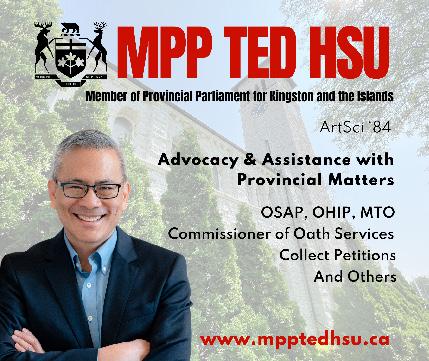
The number of charges, fines, and AMPs skyrocketed to 444, a stark contrast to last year’s orientation weekend where 76 charges were laid.
Of those charges, 295 were for open liquor, 24 for underage drinking, four for public intoxication, 42 for amplified sound or yelling, and 65 for failure to leave an unsanctioned gathering. Nine charges for highway traffic violations were listed with four nuisance parties being declared.
One individual was charged with mischief under $5,000 for damaging a window of a residence.
Announcement of the UDSI comes with a heightened police and bylaw presence in the University District, increasing the likelihood of residents facing charges and fines for illegal activity.
In addition, the City announced Gord Edgar Downie Pier and Breakwater Park will be closed from 8 p.m. to 8 a.m. starting Sept. 7 until Sept 10. The change comes after a nuisance party was declared at the pier this past Sunday.
Anyone found at the pier during closing hours by bylaw or police officers will be issued a $200 AMP.
Under the UDSI, students who receive AMPs for amplified sound or yelling and failure to leave an unsanctioned gathering can pay their fines by mail or in-person at the Kingston courthouse. All other offences, such as public
drunkenness or open liquor, from this past weekend will require a court appearance before a judge at the Kingston courthouse.
“Over this past weekend, [individuals who hosted or visited unsanctioned parties in the University District] created hostile environments for Bylaw Enforcements and other community partners,” said Curtis Smith, director of licensing and enforcement for the City, in the press release.
Queen’s and student organizations have obtained permission from the City for noise permits, road closures, and the hosting of large gatherings for past and future orientation events. Such events won’t receive bylaw infractions.
The Police Liaison Team (PLT), a team of police officer who deliver messages from the Kingston Police department in a non-enforcement capacity, will continue to speak with students and residents in the University District about increased security measures. The PLT distributed paper notices to residences in the University District prior to Labour Day weekend.
“We encourage students and all community residents to engage in conversations with PLT members to ensure future weekends are peaceful, lawful, and safe for everyone,” said Scott Fraser, acting chief of Kingston Police, in the press release.



... continued from front page Roth explained to The Journal she owned other properties in the past and was told by her human resource contact at Queen’s she could invest in properties while on leave.
“I’ve always invested in real estate. Some people do RRSPs or invest in the stock market. This is my choice,” Roth said. “I said to [my Queen’s contact] ‘is that okay?’ She said yeah of course, you can invest your money that way.”
This wasn’t Roth’s first time on leave due to her hip condition. Roth had her left hip replaced in 2015 and returned to working at Queen’s 11 weeks post-surgery.
Roth is claiming $350,000 for wrongful dismissal, $100,000 in damages for discrimination based in disability and lost wages, $100,000 for Queen’s “bad faith,” and any other relief the Court deem just.

Queen’s informed Roth it intended to defend the action in Ontario Superior Court on Aug. 18.

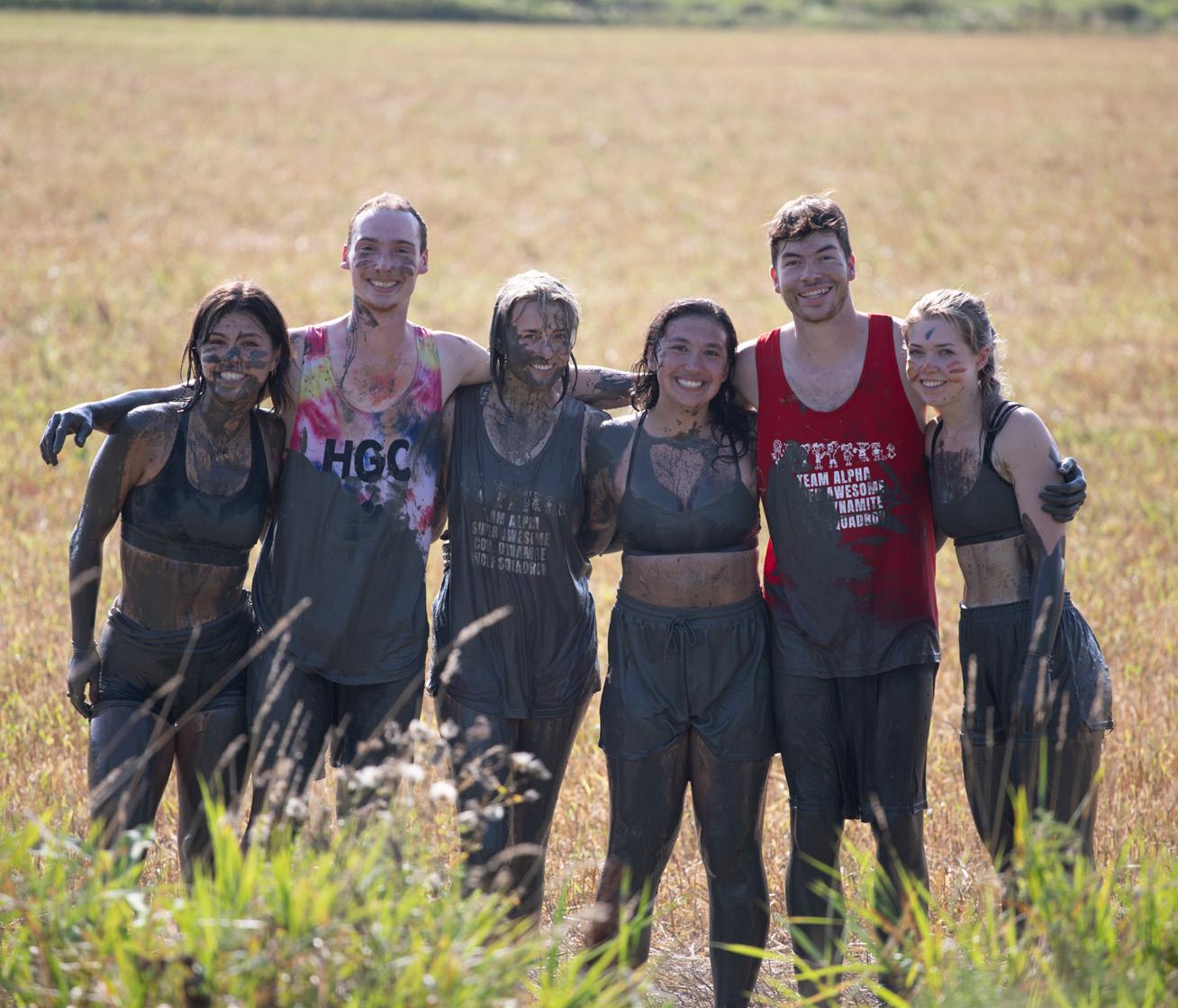
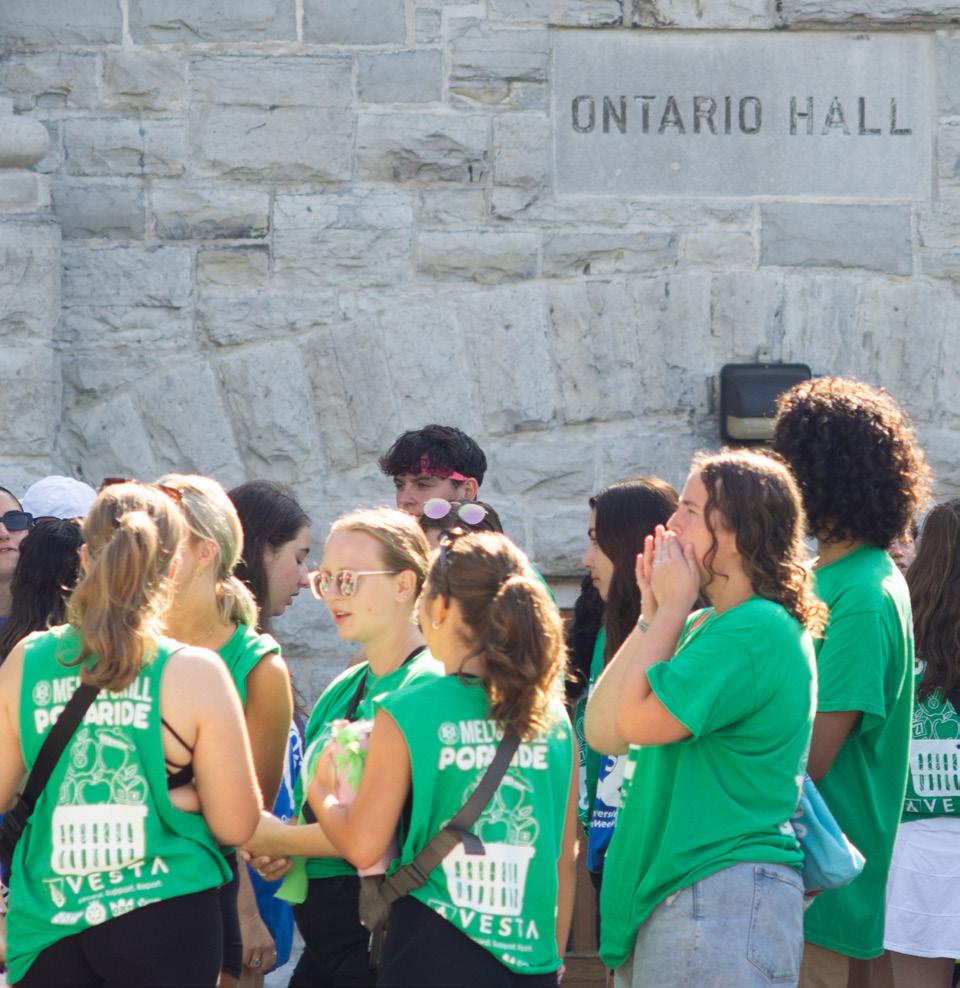
Queen’s position and reasoning will become public when it is filed with the Court by their representation.
“This matter remains before the courts. Due to privacy considerations, we will not comment about specific individuals or cases before the courts,” Queen’s University said.
For Roth, the lawsuit is about resolution. After building her entire career at Queen’s, Roth is seeking closure before pursuing her next chapter.
“I was very devastated, disappointed, by my termination and I feel that I have been wronged in a number of ways. The way my termination unfolded was very unfair,” Roth said. “I felt the need to stand up for myself. I feel the need to continue to stand up for myself.”
...Continued from front page
“Cameras are used for investigative and deterrence purposes, along with many other strategies to educate students living in residence about their responsibilities to each other, and are one element in support of maintaining a secure community where everyone can feel safe,” Wales said.
A Journal reporter visited Victoria Hall and spoke with students to understand their stance on surveillance in residence. The Journal found most students were supportive of the installation of cameras on the premises.
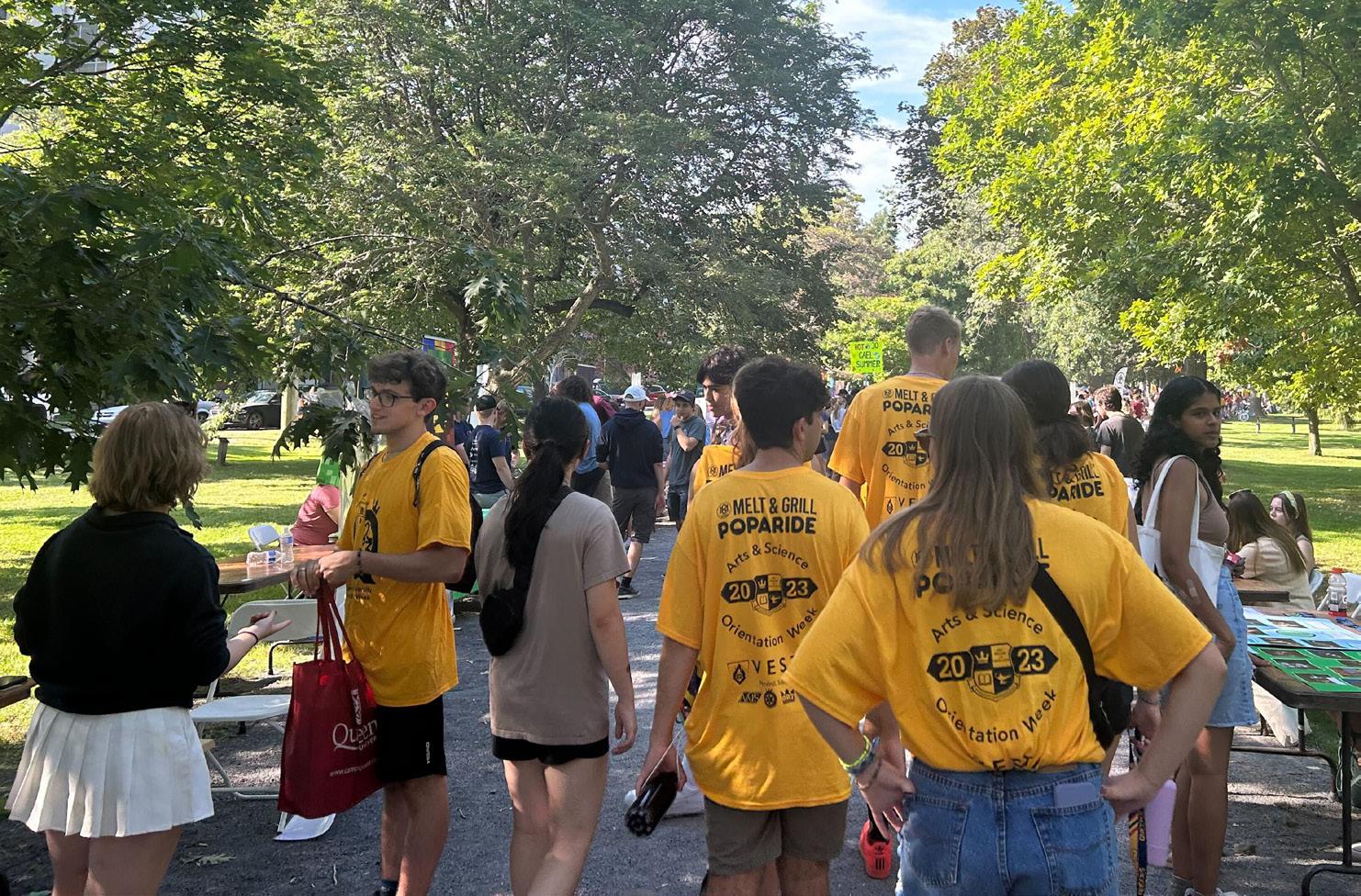
According to Nathan Becker-Stetson, ResSoc is focused on representing students’ voices in these types of decisions.
“We are always open to hearing student feedback, and things that have been discussed in previous years don’t necessarily still hold true today,” Becker-Stenson said.
Though a small city like Kingston may seem shiny and scenic at first glance, residents and students are becoming aware of the growing seedy underbelly of substance use the City experiences daily.
On Aug. 31, an investigation into drug trafficking concluded by Kingston Police officers in the Special Services Division with five arrests, raised synchronized relief and concern for the future of substance abuse in the community.
On Bagot St. between Queen and Bay, 98.4 grams of fentanyl, 28.4 grams of cocaine, 60.1 grams of crystal methamphetamine, a large sum of Canadian currency, and a 2004 Porsche Cayenne SUV were seized at the scene.
A media release on the Kingston Police website said in the aftermath of the investigation, the Police’s Special Services Division said they’re working to target individuals who bring and sell illicit drugs in Kingston.
Kingston Police sent The Journal a statement noting they couldn’t provide any information in relation to the investigation beyond what was communicated in the initial media release. Though Kingston Police said community safety is their number one concern, they wouldn’t comment on the methods or techniques used in those investigations.
Since the investigation’s windup, KFL&A Public Health has kept an eye on the ongoing issue of illegal narcotics. The increasing quantity of hard drugs in the community—especially with the addition of Queen’s University and St. Lawrence College (SLC) students in the Kingston population for the new school year—expresses the need to address substance abuse and the associated stigma.
Research from the Canadian Postsecondary Education Alcohol and Drug Use Survey for the 2019-20 period shows approximately 15 per cent of participants using at least one illegal drug in the last 12 months with drug use higher among respondents in their third year of studies or higher.
The Kingston Police Services Board Quarterly Statistical Report shows 28 drug offences in the second quarter of 2023—a decrease from 33 offences in the same quarter in 2022.
Conducted in collaboration with the National College Health Assessment (NCHA) and Canadian Campus Wellbeing Survey (CCWS), the 2022 Queen’s student health survey overview shows a steady increase of cocaine usage from 2013 to 2022.
The report demonstrates both Canada and Queen’s having similar trends, in drug usage, with each showing that three per cent of all survey participants have used cocaine within the
“Each storyteller is the expert of their own story and will tell you what kindness and compassion looks like for them,” Moucessian said.
The SNS campaign will run until March 2024 with one story being featured every week on SNS’s social media channels: Facebook, Twitter, and Instagram, with full stories available on their website.
last three months. The statistic raises to nine per cent for survey participants who have used cocaine in their lifetime, and 12 per cent for those who report using hallucinogens at least once in their lifetime. Three per cent reported using opioids, and seven per cent reported ever using stimulants.
With an increase in usage among these drugs over a 10-year period, instances like the recent drug trafficking investigation leads to questions about harmful drugs negatively impacting Kingston. Despite this, there are initiatives in place to educate Kingston youth on substance use.
According to the KFL&A Community Drug Strategy (CDS) public health promoter and coordinator Anoushka Moucessian, not everyone’s substance use habits are visible and no one’s immune to the impacts of substance use and stigma.
The KFL&A CDS consists of 40 members as a multisectoral table with representation from individuals with lived experience or postsecondary education of substance use. The table also includes social service agencies, enforcement agencies, parole/corrections, municipalities, primary care practitioners, allied health practitioners, health care agencies, public health, mental health and addictions agencies and funding bodies.
The focus of the committee, which has been meeting consistently since March 2017, is to connect components around substances use through situational awareness, shared decision making around local substance use related needs, and information sharing, Moucessian wrote in a statement to The Journal.
Moucessian emphasized two larger pieces of work the KFL&A CDS Advisory Committee is undergoing to address substance abuse: the Stigma and Education Subcommittee and better advocacy to decriminalize substances for personal possession.
The Stigma and Education Subcommittee, which was initiated by the KFL&A CDSAC in 2019 after it recognized stigma as a major barrier to wellbeing among people impacted by substance abuse.
Moucessian explained substance use stigma is often associated with the decreased use of health and social services, poor service quality, substance use concealment, and an increased risk of homelessness. The key drivers of substance use related stigma include the perspective that substance use is a personal choice, a weakness, or due to a lack of willpower.
The stigma and education subcommittee works in collaboration with Support Not Stigma (SNS) to build a community that is kinder, better informed, and provides through a multimedia campaign. The campaign revolves around seven local individuals’ stories of being impacted by substance use.
According to Moucessian, the individuals’ stories each show substance use can be a way to cope with pain and trauma, substance use stigma impacts, the self through isolation, shame and believing you will not receive help when you asked for it, not feelling heard, seen, or cared about.
The stories demonstrate not everyone who’s impacted by substance use is visible and no one is immune to the impacts of substance use and stigma.
Moucessian referred to Queen’s as a key partner and contributor to the ongoing stigma and education work. Queen’s helps promote the message that no one is immune to substance use and substance use stigma has real implications for well-being.
This past May, KFL&A CDSAC explored the decriminalization of illicit substances for personal use by conducting local community consultation, targeting Queen’s students. Students can see the SNS campaign represented when walking through Mitchell Hall.
“We recognize youth are being impacted by substance use stigma and the hope is that by building greater awareness around the impacts of stigma we can build a bigger conversation around how to create a more compassionate community,” Moucessian said.
KFL&A CDS is following work around decriminalization of substances for personal possession. This initiative explains why people might abuse drugs, then discusses the negative effects of criminalizing drug possession.
Decriminalization of personal possession requires an exemption to Section 56 of the Controlled Drugs and Substances Act. The Canadian Federal Health Minister has power to exempt individuals or municipalities and provinces, from any or all of the Controlled Drugs and Substances Act. Despite this, they can’t amend Parliament’s legislation, according to the website.
The website states the harms of drug prohibition are disproportionate to marginalizedcommunitiessuchasIndigenous, Black, and other racialized and lowincome people—this increases the stigma surrounding marginalized groups which, in turn, increases arrests for drug possession in these communities.
Moucession emphasized KFL&A is taking the opportunity to support Kingston residents and students with a policy that’s focused on well-being and human rights, not harmful consequences.
Everything starts with the motivation of the individual, Executive Director of Youth Diversion Shawn Quigley said in an interview with The Journal.
Much like KFL&A Public Health, the Youth Diversion Program is promoting rehabilitation within the community.
With the goal of assisting youth in overcoming obstacles by offering preventative and educational services, Youth Diversion is a non-profit organization which has been providing services to Kingston’s youth since 1974.
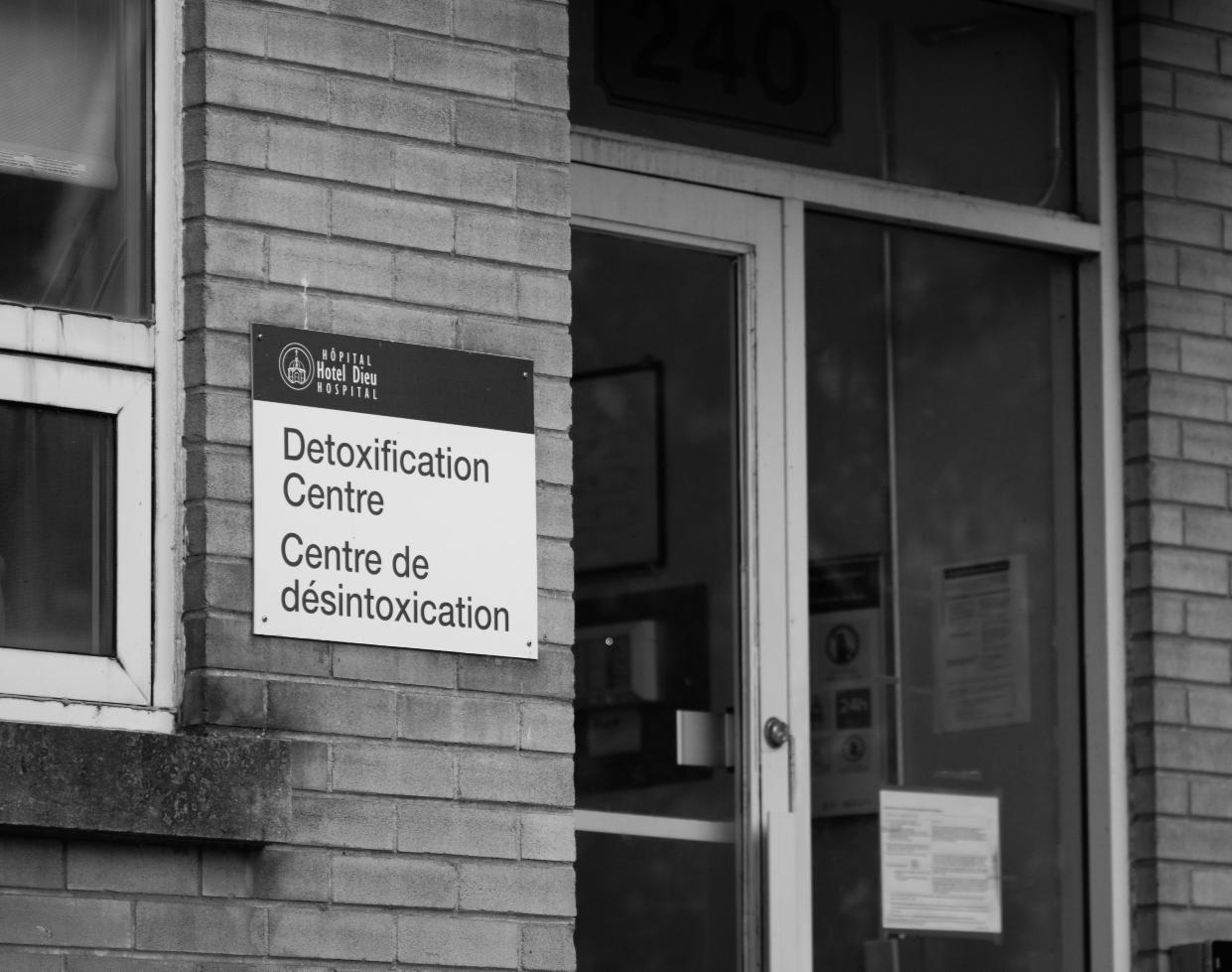
“The one thing we’ve really been starting to notice in our community is the efforts to see substance use not as a criminal issue, but as a medical issue,” Quigley said.
“When it comes to trafficking there’s obviously a different approach because many of the individuals that are experiencing substance abuse, mental health or homelessness are very vulnerable, and they’re vulnerable to other individuals that are engaging in these crimes,” he added.
Quigley noted when talking about drug trafficking, especially at the level of the recent investigation, the individuals involved won’t see the opportunities to right their wrongs through an informal process such as rehabilitation. Instead, they’ll plainly
be charged.
“These folks are going to be charged, go through the justice system, and when found guilty, are going to receive the proper dispositions to try to encourage them not to do this again,” Quigley said.
During that journey, there’s addiction and mental health services in the Kingston community for charged individuals to engage in who are looking to correct their wrong doings by participating in the distribution and trafficking of substances.
“Like I said, it comes down to their motivation, there’s a lot of money to be had and doing what they’re doing. It’s a tough one to try to crack—as soon as the police do an investigation and they lay their charges just as quickly as they’ve charged these folks, other people step in,” Quigley added.
He added if these individuals don’t have the right foundation to seek help and be committed to the community, they come in and exploit it through the sale of substances.
Speaking to the rehabilitation programs Youth Diversion conducts in the aftermath of an incident like drug trafficking, entities such as the Integrated Care HUB (ICH), the Kingston Community Health Centres, Youth Diversion, and the CDS roundtable demonstrate how substance use, mental health and homelessness are all linked, Quigley explained.
“These are people that were being preyed upon by the drug traffickers who were just arrested,” he said.
For example, the CDS roundtable collaborated with the ICH by launching the SNS campaign trying to bring awareness to people who are struggling with mental health, substance use and homelessness in our community.
“Where it all lies is how we treat people who were in their most vulnerable positions,” Quigley said. “If we treat them with kindness and compassion and from a medical perspective, as opposed to a criminal perspective, we’d probably be much better off in providing support to these folks.”
Speaking to the steps the city is taking to prevent increasing illicit drugs into Kingston, especially with the month starting with many more youth in the city, Quigley believes controlling the influx is both a city and community responsibility.
Kingston currently has a community safety and well-being strategy in place which identifies the highest needs in our community by talking to the community through surveys and focus groups, Quigley said.
The most pressing issues spoken about include, but aren’t limited to homelessness, mental health, substance use, and crime.
The next steps involve identifying through the community safety well-being strategy what agencies are in the right position to start addressing these issues.
Quigley stated finding these agencies is one of the biggest initiatives the City of Kingston is putting their leadership into concocting viable strategies to combat these issues.
“Unfortunately, the segment of the population that struggles the most, has the highest amount of stigma attached to them,” Quigley said. “The loudest voices in the community don’t necessarily tend to be the supportive voices.”
“It’s about trying to balance with the city and helping them to appreciate that if the folks in our community could do well, then why wouldn’t they.”
‘If the folks in our community could do well, then why wouldn’t they’
Skylar Soroka
Features EditorPHOTO BY JOSEPH MARIATHASAN
A more thorough review of Boris Cherniak’s performance would and should have prevented the racially insensitive scene performed at Gael Orientation pre-week.
Queen’s Arts & Science Undergraduate Society (ASUS) hired hypnotist Boris Cherniak as the performer for a “Mystery Event” attended by Gaels, orientation chairs, and student leaders.
Once onstage, Cherniak persuaded hypnotized audience members to imitate foreign languages.
Insensitive material should never have been permitted at an orientation event, which aims to foster community and positivity. Had this performance been attended by first-year students instead of their Gaels, the fallout would have been even more devastating. Racialized students who’d come to Queen’s hoping to find it more inclusive than alleged would have immediately believed themselves proven wrong.
To anyone who had properly researched Cherniak’s act, this performance wouldn’t have been a surprise. Cherniak has performed this exact skit many times—on television and at multiple Queen’s orientations in the past.
All orientation events undergo thorough revision. The Orientation Roundtable Committee (ORT) Coordinator, the AMS’s Commissioner of Campus Affairs, and the Dean or designate must all approve of each event.
At some point, one of the many stakeholders involved in that process should have thought to review the content of Cherniak’s performance, particularly because it involved hypnosis, which inhibits consent.
It’s questionable whether an event that places students in public, acting beyond their consent onstage, is even appropriate to host at a university.
Once the performance became offensive, one of the many officials should have put a stop to it.
involvement is disingenuous of the AMS and attempts to shirk the responsibility they owe students.
Admittedly, though, the AMS’s response to this incident displayed marked improvement from previous instances.
The AMS quickly condemned the
Regardless of why the performance wasn’t stopped, its continuation implied institutional acceptance of Cherniak’s inappropriateness and demonstrated a further failure to protect the students who were present.
Despite its attempts to imply otherwise, the AMS wasn’t entirely uninvolved in the planning of this event.
Although Cherniak’s performance was unsanctioned, it was only because some participants didn’t submit their waivers for the event on time. Had all waivers been submitted, this would have been a sanctioned event.
Labelling the event unsanctioned rather than acknowledging their own
performance’s culturally insensitive comments and provided next steps in the form of a guide for future event organizers on how to handle situations like Cherniak’s performance.
Asking attendees to delete videos from the hypnotism will protect its participants from being punished for acts they could have been pressured into performing.
This event should serve as a learning experience for the AMS. Hopefully, their response to this event marks a first step towards improved communication and accountability in the future.
—Journal Editorial Board

the European General Data Protection Regulation (GDPR), which governs how users’ personal data in the EU is processed and transferred.
On a personal scale, if you have ever granted your smartphone’s digital assistant permission to your microphone, more data than you realized may be exposed for collection.
Siri and Alexa aren’t the only entities accessing your voice.
To serve those eerily personalized ads, social media apps quietly tap into device mics and use background sounds to fine-tune marketed content.
The technology we have employs data collection methods to not only consume its users, but make us reliant on it. The more we use it, the better it knows how to cater to us, and the harder it is to go without.
Users should remember to be careful of what information they’re allowing mobile apps to access and collect.
As technology advances, preserving digital privacy becomes progressively more challenging.
Elizabeth Provost James Winslow
Business Staff
Want
Business Manager Manal Shah
Sales Representative Madeleine Smith Irina Tran
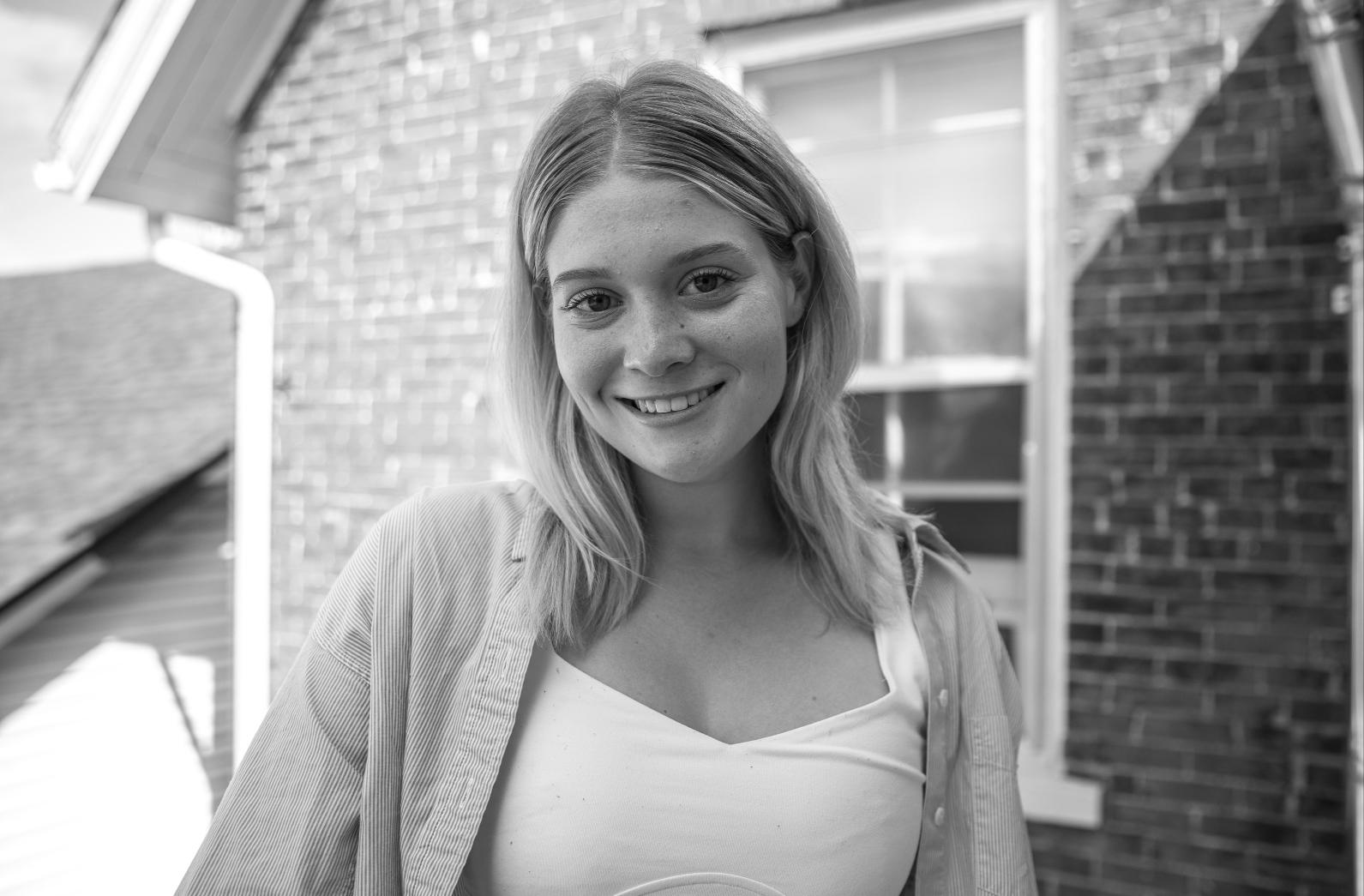
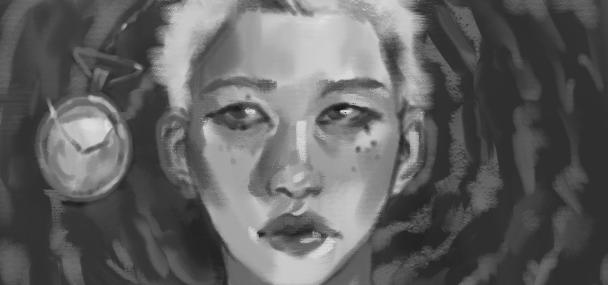
Fundraising Representative Margaret Cavanagh-Wall
Social Media Coordinator Ana Coelho
Contributions from all members of the Queen’s and Kingston community are welcome. The Journal reserves the right to edit all submissions.
The growing impossibility of keeping our personal data private is troubling.
The records of our activity and presence on the internet form our digital footprints. Digital footprints, unique to every individual, contain financial information, insight into our likes and dislikes, and the details of our private lives.
As paper has turned into screens, it’s nearly impossible to avoid the imposition of technology on most of humanity’s lives.
Equifax, a large credit reporting agency in the United States, uses personally identifying information—such as social
security numbers—to organize users’ credit accounts while compiling their credit history. In 2017, hackers gained access to this information, stealing data from hundreds of millions of people.
Data breaches challenge the ethical permissibility of widespread collection, as it increases users’ vulnerability to data theft. Ultimately, the Equifax incident and those like it underscore the urgency of protecting our digital boundaries, particularly against large corporations.
To create effective data protection systems, North American policymakers, corporations, and individuals must work together through initiatives like
When each person exists as no more than numerical data, it erodes personal identity and homogenizes individuals into categories of consumers. Our individual identities should not be reduced to two-dimensional digital profiles.
The use of cell phones or laptops, which have become inevitable for most, should not equate to an automatic loss of one’s sense of self.
People are inherently entitled to personal autonomy and privacy, rights we’re now required to balance with the inescapability of being digital citizens.
Let’s pledge to protect our digital world and preserve our individuality in this new era.
For information visit: www.queensjournal.ca/contribute or email the Editor in Chief at journal_editors@ams.queensu.ca
Contributions from all members of the Queen’s and Kingston community are welcome. The Journal reserves the right to edit all submissions.
The Queen’s Journal is an editorially autonomous newspaper published by the Alma Mater Society of Queen’s University, Kingston. Situated on the traditional lands of the Anishinaabe and Haudenosaunee peoples. The Journal’s Editorial Board acknowledges the traditional territories our newspaper is situated on have allowed us to pursue our mandate. We recognize our responsibility to understand the truth of our history.
Editorial opinions expressed in The Journal are the sole responsibility of The Queen’s Journal Editorial Board, and are not necessarily those of the University, the AMS or their officers. 190 University Ave., Kingston, ON, K7L 3P4
The Queen’s Journal is an editorially autonomous newspaper published by the Alma Mater Society of Queen’s University, Kingston.
Situated on the traditional lands of the Anishinaabe and Haudenosaunee peoples. The Journal’s Editorial Board acknowledges the traditional territories our newspaper is situated on have allowed us to pursue our mandate. We recognize our responsibility to understand the truth of our history.
Editorial Office: 613-533-2800
Business Office: 613-533-6711 Fax: 613-533-6728
Email: journal_editors@ams.queensu.ca
Please address complaints and grievances to the Editor in Chief and/or Managing Editor.
The Queen’s Journal is printed at WebNews Printing Inc. in Toronto, Ontario.
Editorial opinions expressed in The Journal are the sole responsibility of The Queen’s Journal Editorial Board, and are not necessarily those of the University, the AMS or their officers. v 190 University Ave., Kingston, ON, K7L 3P4
Editorial Office: 613-533-2800
Business Office: 613-533-6711
Contents © 2023 by The Queen’s Journal; all rights reserved. No part of this publication may be reproduced without prior permission of The Journal.
Fax: 613-533-6728
Email: journal_editors@ams.queensu.ca
Please address complaints and grievances to the Editor in Chief and/or Managing Editor.
The Queen’s Journal is printed by Webnews Printing Inc. in Toronto, Ontario.
Contents © 2023 by The Queen’s Journal; all rights reserved. No part of this publication may be reproduced without prior permission of The Journal.
Contributor
Queen’s philosophy students would benefit from being exposed to more diverse philosophical theories, especially those outside of the Anglo-American and continental traditions.
As a department well distinguished for its outstanding students, faculty members, and contributions to academia, Queen’s philosophy has a duty to the student body to expand their programs beyond Eurocentric study to promote this reputation.
This is especially important considering the increasing interest in recognizing Equity, Diversity, Inclusion, and Indigeneity (EDII) in post-secondary education.
Philosophy degrees are designed to help students develop critical thinking skills, analyze philosophical traditions, and apply theory to real-world issues.
In my first and second year as a philosophy undergrad, I noticed almost every philosopher we learned about was European, with European philosophers in general considered to be the staple of philosophical thought.
This, however, is only true in the sense that Western philosophers have dominated the work
Dear Editor,
In his March 2023 report, Ontario Patient Ombudsman Craig Thompson warned not to expect improvements in the long-term care sector as the COVID-19 pandemic remains a factor ‘exposing and aggravating long-standing
we study, not that they compose the most insightful philosophical canon. This dichotomy reveals the underlying Eurocentrism often present in Western philosophical academia.
True excellence for philosophy departments is only achievable through the inclusion of more voices to ensure heterogeneity in thought and debate.
It’s in the best interest of future generations of students that the Queen’s philosophy department integrate a multitude of philosophers in degree plan courses. Notable theorists that aren’t—but should be—taught include Jeanette Armstrong, John Burrows, Angela Davis, Alain LeRoy Locke, and Zhuangzi.
This allows Queen’s students to connect Western ways of thinking to philosophical ideas from other parts of the world.
For example, in the required 200-level classes at Queen’s, many of the philosophies taught portray Christian beliefs and influences.
One example of such influence is found in Descartes’ mind-body dualism, which shaped the mainstream Western belief that humans have both physical and rational existences. Descartes’ philosophy was influenced by his Christian beliefs, and this theory can be challenging for individuals whose cultural beliefs or religion don’t align with Descartes.
As his theories and personal beliefs are closely intertwined, it leaves little room for other perspectives. His ingrained religious values prevented him from exploring the possibility
stresses on our health care system’. Two days later, the Financial Accountability Office of Ontario had a warning of its own, that health care challenges are expected to persist for years due to health care system underfunding.
Understandably, lack of access to care and inadequate staffing in Ontario health institutions will continue to have a
of a connection between the mind and body, rather than viewing them as two distinctly differing entities.
If a student doesn’t accept the idea of the immortal soul, they may struggle to understand Descartes’ philosophical methods. It forces them to be in constant discussion of religious beliefs they might not personally observe.
It’stheinstitution’sresponsibility to prevent the disproportionate consideration of European ideas and interests in Canadian education. Canada prides itself on its multiculturalism—all the more reason why it’s necessary and should be easy to introduce different philosophical perspectives into a post-secondary curriculum.
The unfortunate alternative is current and future generations growing up with a lack of awareness and tolerance for other cultural beliefs and practices. This excluded historically underrepresented and marginalized students from pursuing philosophy graduate studies programs due to a perceived lack of supervisors with alternative specialties.
Eurocentrism in philosophy impacts how philosophy students engage in dialogue both inside and outside of academic contexts.
Destructive Eurocentric philosophical ideas are reinforced and perpetuated through the study and application of European philosophical theories written through the lens of settler-colonialism.
These philosophies reflect many prejudicial and Eurocentric assumptions that have shaped the way individuals in Western societies perceive the physical and social world. This becomes
direct impact on the quality and level of care patients can expect in hospitals, and most likely an even greater impact in long-term care facilities, where systemic neglect has been ignored for decades.
The reality though, is that in some situations, the admission of a loved one in a long-term care facility might be the only viable option for a family
harmful when discriminatory ideas expressed in colonial European works are applied to multicultural Canadian communities.
In 2019, Queen’s publicly endorsed the Canadian federal government’s Charter dimensions: Equity, Diversity and Inclusion Canada Charter. According to Queen’s resources, the objective of this document is to demonstrate the benefit of the aforementioned EDII principles on post-secondary research by diversifying knowledge, improving access to research funding, and including a diverse range of individuals in post-secondary research projects.
So far, the philosophy department hasn’t made great strides to achieve EDII goals.
By neglecting to incorporate a more diverse set of voices in the mandatory undergraduate courses, the cultivation of knowledge within the discipline furthers the exclusion of minority groups at Queen’s.
The solution to dismantling Eurocentrism is integrating more culturally diverse ideology in mandatory philosophy courses.
It’s not about unlearning European philosophies, but rather about ensuring all individuals and communities are consulted, discussed, and better understood.
Many professors, in my experience, have demonstrated a strong awareness of this issue and have made noticeable efforts to adhere to the EDII principles. For example, the “Animals and Society” course syllabus includes various insightful works on Indigenous animal ethics.
Additional steps for the department to take are to implement a mandatory three-unit
in crisis. If so, the best plan to guarantee a loved one’s safety – and basic care in a facility – is to hire a private personal support worker, or a nurse.
If hiring private care is not feasible, then caregivers could opt for the installation of a video camera in a loved one’s room immediately at the time of admission to a facility.
One last helpful tip: visit your
course that covers contributions of other global thinkers, or to amend the mandatory classes and readings to incorporate more diverse work.
Representation in education is important so students can be exposed to an array of philosophical theories, some of which they can identify with or relate to.
Universities ought to equip their students with the skills and information necessary to effectively socialize in Canada’s multicultural communities. Diverse thought and fruitful debate encourage developing philosophers to improve their interpersonal skills.
By making the study of historically excluded racial and cultural groups mandatory components in undergrad, the Queen’s philosophy department can set its students up for better success beyond simply reinforcing Eurocentric norms.
Luckily, students can combat these issues in a number of ways: by critically evaluating their own prejudices, publishing papers that scrutinize the prevalence of Eurocentrism in academia, and educating peers on the underlying Western biases that form a philosopher’s perspective.
Due to the institution’s renowned international reputation, I’m confident Queen’s can achieve such measures as well as inspire other Canadian universities to do the same.
The future of philosophical study starts with us.
Victoria is a third-year philosophy student.

institutionalized loved one as often as you can.
Sincerely,
Lise Cloutier SteeleWant to submit a letter? Email us at journal_letters@ams.queensu.ca
BY VICTORIA DA SILVA Victoria believes Queen’s students would thrive through greater exposure to non-western philosophical work in undergrad courses.philosophy
world that women have long lived in. A world where women are sometimes perceived as decorative,” Holly Richardson from Deseret News said.
The accurate depiction of gender stereotypes is also commended.
“ Barbie the movie exceeded all my expectations. Gender stereotypes are debunked and flung on their heads. Female sexuality is weaponized with hilarious results and the patriarchy is lampooned and attacked,” Emily Maddick from Glamour wrote.
On the other hand, others argue that while the film believes itself to be a feminist feature, it reinforces the same things it tries to critique.
The doll known by many was brought to life this summer in Greta Gerwig’s newest film Barbie and though the film was a global box office success, its messaging and plot was met with mixed reviews.
Starring Margot Robbie and Ryan Gosling, Barbie was brought to life on July 21. The film grossed 1.3 billion dollars in the worldwide box offices’, as a result, one of the highest-grossing movies of all time.
Critics and viewers alike share their opinions on the comedy’s strong messaging and satirical script.
In the film, Barbie Land replicates the toy world Mattel

sold to us growing up. Meant to be a utopia, the Barbies in Barbie Land are always happy, their feet are never flat, they’re thriving in any career they want, and they all represent a conventional beauty standard showing no physical flaws—no cellulite, no stretch marks, just shiny plastic.
After all, Barbies were made to be what every girl wanted to be.
It isn’t until stereotypical Barbie, unsurprisingly played by Robbie, starts to see her perfections falter, and she’s told to go to the real world to mend the relationship of the girl who used to play with the stereotypical Barbie’s doll.
When in the real world, Barbie is met with the reality of being a woman. She gets catcalled by men, passed off as “a bimbo” by a high school teen, and discovers women are marginalized.
At the same time, Ken learns about and becomes
enamoured with the patriarchy. Ken returns to Barbie Land to overthrow the Barbie system and turns Barbie Land into “Kendom”—the Kens’ patriarchal haven.
The Barbies become marginalized, losing their power and status, and become subjugated into submissive roles as girlfriends and maids.
At the climax of the film, Gloria—played by America Ferrera—dives into the contradictions and expectations of womanhood as a product of the patriarchy after Barbie tells Gloria she feels like she’ll never be good enough.
Despite being categorized as a comedy genre, many see the film to hold thematic messaging that acts as a commentary on womanhood, gender roles, and how the patriarchy affects both women and men.
“Barbie does well flipping the script the movie shows us a
Department Head of Gender Studies Professor Sailaja Krishnamurti discussed this paradox in an interview with The Journal
“The movie thinks it’s making fun of [the stereotypical Barbie beauty aesthetic], but at the same time its reinforcing it,” Krishnamurti said.
“It’s both embodying and critiquing a kind of white feminism that privileges corporate success and really white beauty standards [...] We have a Latina mom and her daughter who kind of become the human heroines of the show but they’re implicated in white beauty culture in different ways.”
While showing some representation in its cast, the film missed the mark.
According to Krishnamurti, it’s important to acknowledge how Whiteness and blondeness operate as subtext of the film, despite the film attempting to be the thing it claims to critique.
“I think there’s something important to think about how queerness is represented in the film. In Barbie land you can’t be gay. Because then you just end up being weird Barbie. If we’re thinking about a fantasy world in which real world feminism, mainstream feminism is being critiqued, why not go that step of thinking about queer representation?”
She said that while Barbies don’t fully understand what sex is, they know its only to be performed on a heteronormative basis.
There’s few Black women characters we see in the film. Issa Rae, the most prominent, is portrayed in a way where she’s adhering to those standards and norms.
As a scholar, Krishnamurti is interested in the intersections of race, gender, sexuality, and disability. For her, she not only thinks about how feminism is how women and men should be equal but rather how women can achieve liberation from all kinds of oppression for all people.
“If I think about it from that point of view—I can see why this film thinks its feminist. To me, it’s like a fun mainstream film, that maybe leaves some women feeling empowered but I don’t see it as a big feminist intervention.”
“I don’t look at the film and think this is something that’s going to push feminism forward. I don’t think it’s necessarily going to push feminism backward either. It’s a film and it’s a cultural moment.”
Kingston Symphony Volunteer’s conduct annual book sale Sept. 7 to 17
SUZY LEINSTER
Assistant Arts Editor
The Kingston Symphony book fair has fiction and non-fiction texts for everyone this week.

The Kingston Symphony volunteer group is hosting its annual book fair from Sept. 7 to 17 at 785 Sir John A. Macdonald Blvd. The event offers free admission after Sept. 7 and contains over 40 genres of books. The group supports the Kingston Symphony
Association and organizes various events to promote music education. Book donations for the current book fair began in January.
“[The book fair] helps the volunteer group financially, and to some extent, we [the volunteers] aren’t a large part, but we do our best,” said Elizabeth Andrews, M.Ed. ’85 and Co-Chair of the book fair in an
interview with The Journal.
According to Andrews, the annual book fair brings in around $30,000 in proceeds over the 10 days it’s open. The volunteers advertise the event with posters taped across the Kingston area to gain a large reach for those interested in the event.
The most popular genres at the fair are mystery, Canadiana, cooking, and DIY. Andrews thinks the event would appeal to Queen’s students because they offer texts in sociology, philosophy, psychology, education, and literature.
If students arrive early enough, they have a variety of textbooks for different courses, a cheap way to meet their reading list requirements.
The book is a large event for the volunteers logistically due to the number of texts that are up for grabs.
With over 30 volunteers working the sale, the Kingston Symphony have a lot of dedicated staff to make sure the event runs smoothly. However,
Andrews said they are always looking for more help.
“I think we’re a great service because we’re a place for [the Kingston Symphony Volunteers warehouse space] to downsize and [it] keeps the books out of the dumpster.”
Though there’s no required age to be a volunteer for the book fair’s operations, the majority are however retired. Eight years ago, Andrews went to the book fair and asked if they needed help, after they said yes she’s been there every day since.
Story continuesd online. queensjournal.ca/arts
Art history department discusses opportunities for students interested in arts A previous version of this article incorrectly spelled “Cezanne’s Closet.”
Incorrect information appeared in the July 31 issue of The Queen’s Journal The Journal regrets the error.
Local artists are taking Kingston by storm as the Kingston School of Art (KSOA) sees the last of its participants enter their Juried Art Exhibition and Sale.
KSOA is hosting their sixth annual Juried Art Exhibition and Sale with submissions open until Sept. 10. The entry is open to residents of the City of Kingston, Wolfe Island and the Frontenac Islands and the counties of Frontenac, Lennox & Addington, Leeds & Greenville and Hastings. Participants can enter up to three art pieces. Entries must be original two-dimensional works so they can be hung throughout the exhibit space.
Juried art is a competition for artists to submit their work to a panel of jurors and see if their art is qualified to be shown in the final exhibition.
With over $1,500 in prizes, the Juried Exhibition sponsors help support the artists who enter the competition.
Maddi Andrews, ArtSci ’19, MA ’21 and Executive Director
SUZY LEINSTER
Assistant Arts Editor
Allison Graves’ Soft Serve delivers McDonald’s and Walmart for millennials.
Planned for release this September, Graves’ debut novel of short stories focuses on consumer culture in Canada. While attending Memorial University of Newfoundland
of the Kingston School of Art described the importance of local art to the Kingston community in an interview with The Journal.
She said they’re a local charity that seeks to serve the arts in Kingston and provide opportunities for employment and education.
“The juried exhibition fulfills this mandate in a number of ways. It allows emerging and professional artists the opportunity to exhibit with us and become involved in the school here.”
The event is their largest
fundraiser with proceeds serving KSOA’s mission to contribute to the local art scene. The participants come from a variety of backgrounds and ages. Andrews acknowledged the artists from Queen’s who in past years have won awards and honourable mentions.
Andrews said KSOA has a great relationship with the fine arts program at Queen’s. They have students who help with outreach or volunteer with them.
Overlap between the fine arts program and KSOA has been seen
in the jurors for the event.
Brian Hoad, the Technician Supervisor for the Fine Art program at Queen’s, is one juror for the exhibit.
Another juror, Otis Tamasauskas is a printmaker from Germany who works in Lithuanian designs to show the textile craft of metal and wood. He’s had experience teaching at Queen’s from the ’80s to present time.
The Jurors are chosen from a committee composed of five to eight people who are in charge of
as a creative writing Masters student, Graves began writing Soft Serve as her final thesis project. Her work in Soft Serve can be credited to French anthropologist Marc Augé and his theory of “non-place.”
The project specifically touches on spaces in consumer culture where people can remain anonymous to the world around them while still taking up space. Graves brings voice to the busy, yet isolating, spaces of Walmart and McDonald’s as examples
of non-spaces.
The book takes advantage of the topics of non-spaces to simultaneously reflect on what it means to be in your early 20s at university and how to find a sense of self.
As Graves assesses the ways McDonald’s can act as a non-place crossroad for human interactions.
“It’s just like a lot of kind of millennials who are, you know, moving through spaces, mostly
in Ontario and Newfoundland, which were the two places that I was living.”
The connection between Augé’s non-places and her theme of millennial moments tied her academic career with her creative world.
Currently a PhD Candidate in the English department at Memorial University of Newfoundland, Graves reflects on the stories in Soft Serve, which she’d first written over five years ago.

“I was in my early 20s when I wrote the book and a lot of me is in that book. The stories are less of a specific instance and every story has its own trajectory.”
She mentioned one story about three girls getting trapped inside their house during a snowstorm in St. John’s, NFLD and the parallels between the fictional story and her life.
“That story happened to me and my friends during ‘Snowmageddon’ in Newfoundland a couple of years ago and its pretty poignant for me. I think it speaks to the kind of isolation that happened during that snowstorm but also shortly after the pandemic.”
The stories are meant to show the perspective of millennials in their 20s and how they come to their ways of being in this consumer culture. A similar experience
coordinating the exhibition as a whole. As a committee, they asses the local art scene to see which professional artists will be the most appropriate and local.
“It’s important to us that the professional artists are local and represent a diverse range of media, styles and practices, so what is included in the show reflects the diversity of the art scene. We’re not just getting paintings or prints. We want a really rich variety included in the show” Andrews said.
The jurors themselves must come from a diverse range of practices to ensure there is a wide range of art.
Andrews spoke to the sense of accomplishment these artists have and the community it builds when they have a range of artists in one space.
“It’s really beautiful in particular watching emerging artists, whose works have been selected to be put on display and watch them come into the space and feel a sense of pride that they are involved in a show as one of the 65 works included,” she said.
The sense of opportunity fosters growth, especially since KSOA wasn’t able to do this at the height of the pandemic. Now postpandemic they’re able to reach new audiences with in-person events and showings.
The Exhibition opens on Oct. 7 at 12 p.m. with awards and remarks given at 1 p.m. The event will showcase art until Oct. 29.
Queen’s students may relate to.
“Some of them are written in first person, but a lot of them are written in third person which is where I feel the most comfortable.”
The third person perspective allows her to show a birds-eye-view of the people scanning the aisles in Walmart—lost in their own lives.
“There’s a girl and her dad talking over McDonald’s fries about his cancer diagnosis. There’s a mother pretending she’s princess Diana. There’s a lot of contemporary problems that happens in spaces that don’t always feel very authentic.”
“Ultimately, it’s a lot of millennials moving through spaces in Ontario and Newfoundland […] who are feeling lost or apathetic in their lives and weaving in and out of these spaces.”
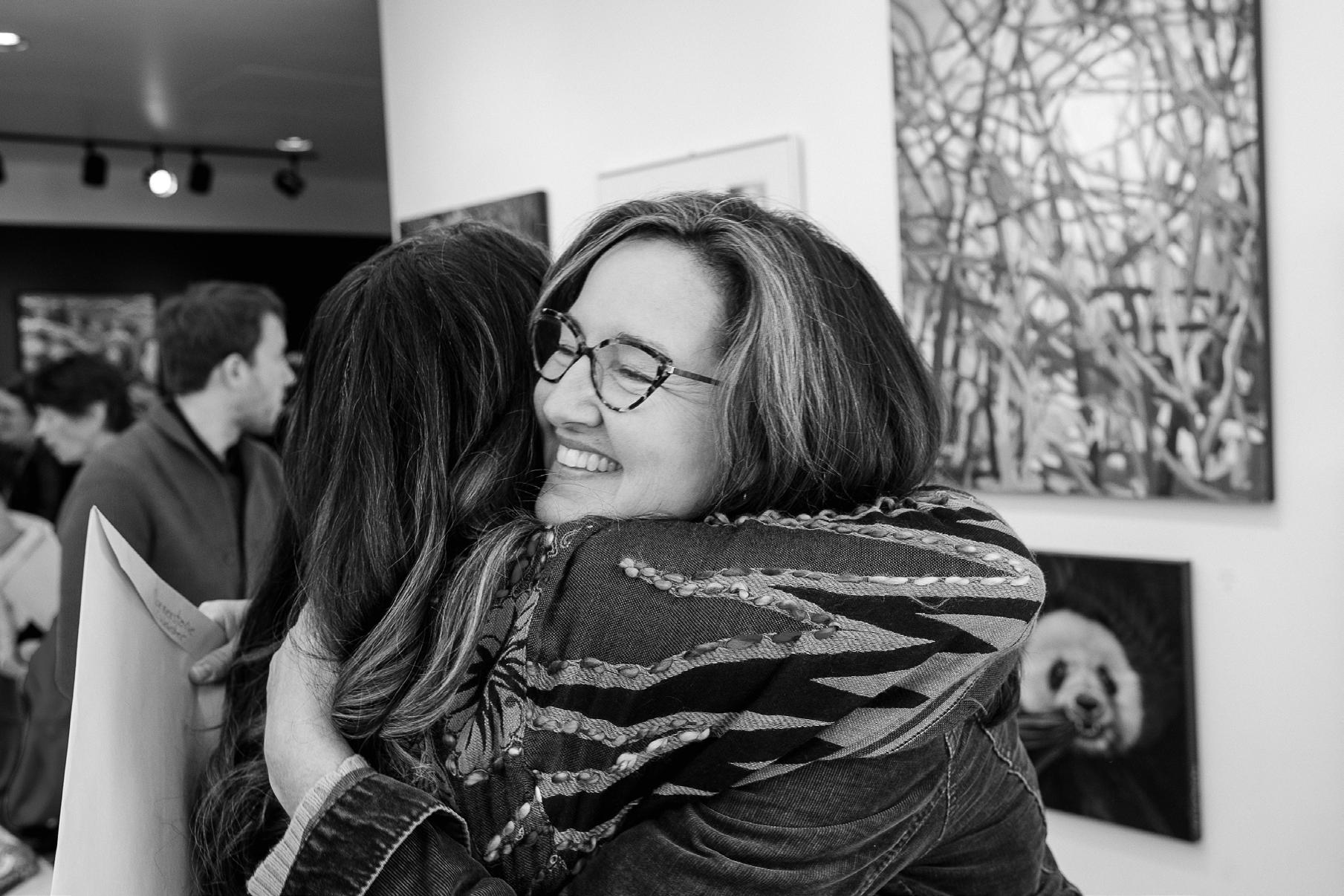
She credited the St. John’s arts community as a place of inspiration and support in the publication of her book.
“It’s a lot of writers, a lot of visual artists and interesting people and academics who come together.”
The bonds she made there have helped her writing, and through her connections helped her be discovered and published by Breakwater Publishing. She said it can be very frustrating for people who want to write, but she encourages everyone to write for literary magazines or enter literary competitions to find a place they can be discovered.
Researchers are using government money to fuel the next generation of scientists.
On Aug. 30, $11.8 million in funding was announced for Queen’s University researchers from the Natural Sciences and Engineering Research Council (NSERC), through their Discovery Grant and Research Tools and Instruments Grant programs.
Assistant Professor of Social and Personality Psychology David Hauser received $202,500 to support his research into vaccine resistance, which explores the mental processes and reasoning styles vaccine resistors use to support their beliefs and meta-beliefs.

“When you put people in a task that’s designed to see how much evidence and information they require before they reach a conclusion, we found this initial tendency, where people who resist vaccines tend to draw conclusions after looking at minimal amounts of evidence,” Hauser said in an interview with The Journal.
The long-term goal of Hauser’s research program is to explore the driving factors behind the belief vaccine resistors have done their research, when in fact they haven’t done their research.
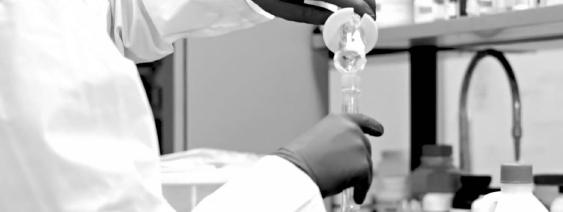
While extremely topical given the COVID-19 pandemic, this research topic was initially developed in 2019 by Andrew Hall, a current PhD candidate in the psychology department, who was exploring general vaccine resistance.
“A significant part of this research involves paying those who participate in studies. [The grant] provides funds so we can provide incentives for participants, and for dissemination of the research, so we get a chance to present it at conferences,” Hauser said.
Hauser shared the vast majority of
funding from the NSERC Discovery Grant goes towards graduate students and helps pay their salaries, for research supplies, and conference travel.
learning models.
“If we really want to push a wider application of these powerful machine learning tools, explanations are a must. Otherwise, no one is willing to adopt these powerful machines. Even though they perform well, if you don’t understand it, if you don’t trust it, you can’t really convince people to use it.”
Hu received support from Queen’s Research Services throughout the NSERC application process, under the Vice-Principal (Research) portfolio.
behind transient systems, so others can understand how to analyze and explore more transient dynamics in the future.
“In mathematical modeling, a lot of the focus is on equilibria, which is what happens in equilibrium, the steady state after a long time has passed. These models are important in many fields, such as physics,” Magpantay said in an interview with The Journal.
Like Hauser, Ting Hu, associate professor of computing, plans to put her Discovery Grant toward training the next generation of scientists.

Hu renewed a previous NSERC grant and received $205,000 to support her research into evolutionary computing, focusing on transparent machine learning and AI algorithms.
“There are some criticisms about applying machine learning and AI techniques in medicine due to the black box nature of a lot of machine learning algorithms,” Hu said. “The long-term goal of my research program is to develop next generation learning algorithms that are more transparent, that are more understandable for applications in medicine.”
Through her interdisciplinary background in AI and computational genetics, Hu realized there’s misalignment in the priorities of computer scientists and medical experts. This inspired her current research which helps create machine learning interfaces that can learn from and apply data, but also communicate with the end user.

“When we don’t really understand how the algorithm works, we don’t understand how the machine has come to its decision, then you won’t trust it,” Hu said.
Another more novel approach Hu is working toward is integrating computer-human dialogue into the interface, like the ability to concepts to one another. This method involves integrating specific domains of knowledge into the machine
Embryonic stem cell technologies are some of the most costly and controversial approaches in cell-based research.
Embryo tech is a relatively new term relating to technologies that rely on embryonic stem cells as
the basis for their research. Embryonic stem cells (ESCs) are cells harvested from the embryo four to five days after fertilization.
Significant funding has been invested in embryo tech due to ESCs having unique properties such as pluripotency and immortality, meaning they retain the potential of dividing into different types of cells or into more stem cells.
These qualities allow them to be used in technologies that make specific cells needed to treat degenerative diseases.
Much controversy with ESC-based
“They hosted seminars, where they invited people who were on the reviewing committee last year or who were very successful in their recent grant applications to share their experiences with those currently going through the process,” Hu said.
Felicia Magpantay, associate professor in the department of mathematics and statistics, echoed this sentiment, sharing how she received more support from Queen’s during the NSERC application process than from different institutions in the past.
Transient dynamics describe the periods before reaching equilibrium. Magpantay is interested in long transient dynamics, which last for such a long time you might think you’re in equilibrium, but you haven’t actually reached a steady state.
The specific mathematical models that Magpantay is developing can be applied to epidemiological concepts, such as disease transmission.
A common application of transient dynamics is the honeymoon period of disease transmission.
If a population has a childhood disease, and then that population undergoes mass vaccination, the disease incidence decreases. Sometimes it may stay that way for decades.
Magpantay received $195,000 in funding through her NSERC Discovery Grant. She works with mathematical modelling, using differential equations to describe the laws governing how systems evolve over time.
A primary goal of this NSERC-funded research program is to develop theory
technologies lies in retrieving these cells, since they require the formation and destruction of an embryo. Large biotechnology companies such as Bayer AG are based out of Germany, a country which has strict laws surrounding the destruction of embryos for research purposes.
The loophole is that they can use existing embryonic stem cell lines created prior to 2007.
In Canada, it’s permissible to use ESCs for research purposes if the cells were harvested from human embryos that were created by in vitro fertilization (IVF) and are no longer required for fertility treatment. There are still tight regulations, however, with a very limited number of labs allowed to access and use these cell lines.
There are ethical and moral dilemmas surrounding the use of the cells themselves, since there are different perspectives on what is considered life.
Controversies lie in the cost going into these studies. Despite billions of dollars of funding across private and public research sectors, there has been no successful ESC treatment made available on the market.
The most promising potential treatment that has emerged is transplanting lab-made neurons created from embryo tech into the brains of Parkinson’s disease patients.
Parkinson’s disease symptoms are caused by a shortage of dopamine and dopamine-producing neurons.
While this may be perceived as equilibrium and the disease may be considered “eradicated,” it’s not. This is a transient dynamic that will end at some point, when the disease could become more volatile, or outbreaks could occur. Magpantay hopes to apply for more grants which will allow her to collaborate with other fields in the future, such as public health, to broadly develop and apply these theories.
Unfortunately, the body is unable to create new neurons or repair disordered ones.
This is where embryo tech is very beneficial as the ESCs can be used to grow new neurons to be implanted into the patient and restore dopamine production. At the forefront of this new treatment is BlueRock, a subsidiary of the well-known pharmaceutical company Bayer AG.
It’s important to highlight there have been other strides made in stem cell research. Researchers now know how to convert any cell into a pluripotent stem cell through gene editing which reprograms the cell to return to an embryonic-like state. Through refining this approach, the use of these “induced” stem cells could potentially replace embryonic stem cells, eliminating the controversial need for embryos.
This carries over to another interesting discovery in embryo tech, where these induced stem cells can be used to form embryo-like structures, referred to as synthetic embryos.
These structures would be able to develop an embryo model without the use of sperm or egg cells. Currently, these models are used in contraceptive research to test and develop new contraceptives.
Although this is a brief overview of all the emerging applications of embryonic stem cells, it is exciting to think about the potential to treat life-altering diseases and development of new research models.
Queen’s has long been known as a powerhouse in U SPORTS Rugby, producing talents such as Sophie De Goede and Lauren McEwen. Now starting her third season with the sport, fifth-year Lizzie Gibson is another player who’s making waves and smashing records.
On Sept. 2, the jack-of-all-trades,Gibson scored a kick against Trent to smash the Queen’s Women’s Rugby all-time scoring record, created by Lauren McEwen in 2014.
Originally from Caledon, ON, Gibson started playing rugby in high school. There, she
met her coach, Colin Bowens, who had an outstanding impact on Gibson’s junior career. Gibson mentioned Bowens still supports her to this day, and takes time to voice his support for her on social media.
Coming to Queen’s, Gibson had no intention of breaking the all-time points record, and after an injury in 2021, she didn’t see it as a feasible goal. It wasn’t until a social media post highlighted that Gibson was third for Queen’s Women’s Rugby all-time scoring last year that she knew about her status.


Gibson cited her teammates as the driving force behind her success.
“It’s an unreal feeling to be a
Two clear sheets and a pair of ties
part of this team and to celebrate with my teammates because I wouldn’t be kicking for points if they didn’t score the tries,” she said in an interview with The Journal. “If we didn’t blow up teams 100-0, I wouldn’t be able to check points.”
Aside from her amazing achievement, Gibson highlighted the importance of McEwen—now the Assistant Coach of Women’s Rugby—being there to watch and support her as she launched the record-breaking points through the uprights.
“[It’s a] big wave of emotions [that] I get to do the moment with her,” Gibson said. “It was huge, like ‘wow, I just beat a legend from Queen’s, and she’s here to celebrate with me.’”
RORY STINSON Senior Sports EditorWith the start of the soccer season underway, Gaels fans have something to be excited about.
On Aug. 31, the Men’s and Women’s Soccer teams took on the University of Toronto’s Varsity Blues at Richardson Stadium.
The women’s team came out victorious, with goals from first-year forward Leda Naihin and third-year forward Mattson Strickler for a 2-0 shutout. Fourth-year goalkeeper Kirstin Tynan faced two shots on net.
Although you might expect jealously from McEwen, Gibson explained that McEwen was one of the biggest contributors to her success. She cited McEwen as the person who taught her how to kick and maintain her focus whether things were going her way or not.
Alongside McEwen and Bowens, Gibson had a plethora of dedicated coaches pushing her to become the athlete she is today. She mentioned former Team Canada Rugby Coach Sandro Fiorino, and current Queen’s Coaches Dan Valley, Britt Benn, Sean Dunleavy, Blake Wilson, and Mohamed Yusuf as having a tremendous impact on her development.
The men’s team tied their first game 3-3, with two goals from fourth-year striker Matthew Ciavarro, and one goal from second-year forward Pablo Hempelmann-Per. Fifth-year goalkeeper Manuel Dirube saw six shots on goal.
Both teams took to the Richardson stage again on Sept. 3 to play their second game of the season against the Ontario Tech Ridgebacks.
The women’s team shut out their opponent again with another 2-0 victory, with another goal from Naihin, as well as second-year midfielder Lily Goss. Tynan made
This isn’t to say that Gibson hasn’t experienced her fair share of adversity. After tearing her ACL, Gibson had serious doubts about her commitment and ability to return to play. This is when she found the support of her family, pushing her to keep chasing her dreams and not to give up.
Gibson said she doesn’t expect to slow down during the remainder of the season, and her team, she’s driven towards shared achievements above all else.
“I don’t think we’re ever going to stop. We aim for banner season and this year, we want two banners. We want the OUA banner, and we want the national banner.”
two saves.
The men’s team secured another tied game with a score of 2-2, where Ciavarro and HempelmannPer scored one goal each. Dirube stopped three out of five shots.
Following the first two games, Ciavarro was named U SPORTS Men’s soccer player of the week on Sept. 6. With three goals and one assist between two games, he’s currently ranked second nationally among U SPORTS soccer athletes. Both teams play four remaining home games on Sept. 8, Sept. 23, Oct. 5, and Oct. 14. All home games will take place at Richardson Stadium.
In an early game against Trent University, the Queen’s Men’s Lacrosse team couldn’t pull through in time to see a win on their first game of the season.
The team played their first game after putting the team together a week prior. With the roster being decided on Aug. 30, the Gaels only had two practices before jumping into a game. In previous years, the team could get in at least one more practice before their first game on the following weekend, but with Trent‘s first-year events taking place, the game was moved to earlier in the week.

According to Queen’s Lacrosse Head Coach Connor Kearnan ,approximately 1500 fans
were in attendance.
At the end of the first half, Queen’s was down 4-1. Despite a comeback in the second half of the game, the Gaels’ final score came just shy when they clocked in the game at 5-8.
Kearnan attributed the loss to the quick turnaround between try-out and the game, as well as some coaching mistakes.
In an interview with The Journal, Kearnan said these were mistakes they wanted to clean up
“We were pretty sloppy, both bench staff and on the field with the guys playing.”
The game changed directions after a 10-minute intermission between halves. In the second half, the Gaels scored four goals.
“You’ve got to ride the highs and lows of any game, especially in lacrosse, because there’s
lots of them.”
During the game, Kearnan said he hoped to see the smaller details of the play executed better. He said the plays they complete in practice need to translate into the game, which is something that will come as the team settles into the season.
Despite the loss, Kearnan mentioned some benefits did come out of the game.
“The second half was awesome. Our goalie, Ryan Gemus, was absolutely lights-out the whole game,” he said. “It could have been 12-1 without him. He made some very key stops.”
The team has another game taking place against Bishop’s Gaiters, before coming home and playing against the Ottawa GeeGees on Sept. 17.
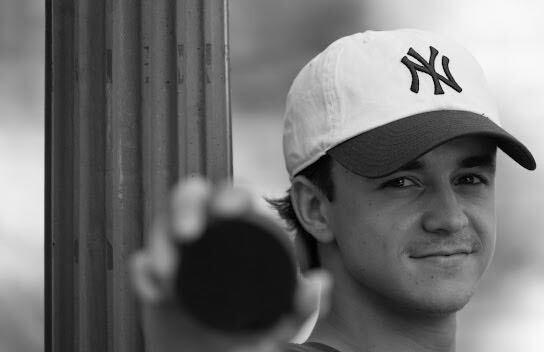
Throughout my interviews with various Gaels coaching staff, the desire to embody a gritty and hard-headed work ethic has stood out. Gaels Men’s Hockey Coach Brett Gibson described it as ‘blue-collar.’
Blue-collar workers are unafraid of physical labour and getting their hands dirty, as opposed to white-collar workers, who often work desk jobs with little physical demand.
In terms of play, a blue-collar team is willing to get aggressive and fight their battles. Blue collar teams don’t give up, earning their successes through hard work.
In an earlier interview with The Journal, Gibson mentioned the play style’s appeal when considering how to rebound from the the Gaels’ struggles in the first half of last year’s season. He said that historically, the team’s identity was based on its blue-collar play—something the Gaels need to get back to.
We don’t have to look far outside of the realm of U SPORTS to find examples of notoriously successful—though sometimes controversial—blue-collar teams.
The 2004 Detroit Pistons were a feared basketball team in the NBA, comprised of many physically dominating, hardworking athletes who helped the team clinch the NBA Larry O’Brien Championship Trophy that season.
In the NFL, the 1976 Oakland Raiders team was home to Jack Tatum and George Atkinson, two of the most feared hitters at the time. They achieved a Super Bowl win that season.
This gritty style of play
was typically seen from teams years ago, especially in the hockey world, where enforcers were a big part of the game. A lot of fans are excited that the grittiness and dedication to the game is making a comeback in a much safer manner.
The Vegas Golden Knights and the Florida Panthers are currently two of the most hard-nosed, head-down, gritty hockey teams in the NHL. With both teams meeting in the Stanley Cup Final this season it’s fair to say this blue-collar mentality is a desirable attribute for any team in any sport.
The blue-collar mentality Gibson seeks is a great opportunity for the Gaels’ defensive improvement.
With the addition of the Soo Thunderbirds forward Dharan Cap, who won the NOJHL’s Top Defensive Forward award in the 2021-22 season, and Nathan Ribau, a physical defenseman from the Niagara Ice Dogs, who’s valued for his aggression and tenacity when battling on the ice the Gaels are taking a good step towards this type of play.
The return to a blue-collared form is feasible today’s game, and we won’t have to wait much longer to watch the vintage style of play in Men’s Hockey.
The Gaels Men’s Hockey team opens up the season at home on Oct. 5 against the Ontario Tech Ridgebacks. I anticipate a close, physical game that you won’t want to miss.

The Gaels Men’s Hockey team looks to get off to a hot start this pre-season at the Lou Jeffries Arena in Gananoque this Saturday, Sept. 9 against the Royal Military College of Canada (RMC) Paladins.
The decision to host the pre-season opener in Gananoque stems from the obligation to
honour Lou Jefferies, a lifelong minor hockey devotee. Jeffries dedicated over half his life to developing minor hockey in Gananoque, going so far as to bring Gananoque its very own Junior B team, the Gananoque Islanders.
Over his 50 years serving the community, Jeffries held the positions of coach, general manager, Gananoque Minor Hockey Association (GMHA)
league executive and Junior B Gananoque Islanders president. During these years, he had a positive influence on Queen’s Men’s Hockey Head Coach Brett Gibson.
Jeffries’ impact on Gibson was so profound that the Gaels travel to the Lou Jeffries Arena annually for their exhibition game, which pays homage to Lou Jeffries and raise smoney for scholarships in the
Gananoque hockey community.
The sentiment of funding a scholarship in Jeffries’ name comes from his desire to help kids develop into student-athletes who can take their talents to the next level in collegiate sports.
The Gaels and Paladins have a 136-year-old rivalry which has never disappointed
in providing fans with a fast-paced game. Most recently, the Gaels defeated the Paladins in a close 2-1 battle, which went to overtime. That game decided the victor of the Carr-Harris Cup, introduced to celebrate the oldest rivalry in the history of U SPORTS hockey.
From
If you were in the GTA this past August, you likely noticed many local Metro grocery stores were closed.

To me, fall has always invited new beginnings.
The start of a school year, a new rhythm of wake-up times and late nights, the smell of new notebooks, and the jitters of making new friends. In my undergrad, I became accustomed to the undulations of this newness, but this year feels completely different—I’m 22, starting my Master’s, and moving away from home for the first time. Now based in Kingston, I’m no longer comforted by what’s familiar.
Two years ago, at the onset of my third year at the University of Toronto Mississauga, I stepped into the role of Editor in Chief of my campus newspaper, The Medium, which I held for my last two years of undergrad. During my first serious—by which I mean longer than three
months—relationship the previous summer, I started a column named “From Liz, With Love,” where I answered anonymous questions bi-weekly on topics relating to relationships, friendships, loneliness, insecurity, and family. When answering these questions, I shared my own vulnerabilities too, since my time at The Medium was marked by my own ups and downs in those categories.
I write this opening note to you, dear reader, from a Via Rail train back home to Toronto from Montréal, where I grew up. I run back to my hometown when I’m desperate to catch my footing. This time, I’m processing the wave of emotions following texting my ex (AH!) and him visiting me this summer from overseas (double AH!). I write this with a clear understanding of why my recent attempts at online dating, meet-cutes, and the whole “casual” thing have failed flat—I was still in love with him.
As we slowly ease back into each other’s lives and taste the familiar bitterness of distance, I meet this September and the rebirth of this column at The
Journal with an arsenal of experiences and an eagerness to make sure you’re heard. I hope to give you a safe space to unload, rant, and leave your worries in my hands. I’m not a professional, but I’ll do my best to help.
Albeit with difficulty, I’m taking advantage of the season to let go of patterns from previous relationships and I am excited to take you, dear reader, along as we figure this whole “love” thing out together.
What do I ask of you? Email me your question, your story, or your “hypothetical” scenario. All questions will be made anonymous in print, and nothing is too simple, serious, dark, deep, or silly. Keep your questions to around 200 words. Text screenshots are welcome. Email your submissions to journal_editors@ams.queensu.ca, who will then forward the piece to me, or keep it super anonymous by dropping off printouts and your letter in an envelope at The Journal’s office. Happy fall, embrace the new beginnings! With love, Liz
On July 29, roughly 3,700 Metro employees across 27 stores in the GTA—with Unifor Local 414 as their union—took to picket lines after rejecting a deal from Metro, which offered full-time employees an increase of $3.75 and part-timers an increase of $1.05 over four years. One hundred per cent of Metro workers voted to strike in June, demonstrating a dire need for better working conditions.
The new deal, which workers ratified on Aug. 31, will boost full-time workers to an extra $4.50 an hour and part-time workers to an additional $3.20 an hour. Under the new deal, the increase will be stretched over a five-year period.
Unifor Local 414 members spent five gruelling weeks protesting for better wages While workers started protesting outside closed Metro locations across Toronto, they later moved on to forming blockades at Metro warehouses to prevent trucks from making produce and meat deliveries.
The company later won a court injunction to cease the blockade on Aug. 29, the occupation created an impressive spectacle, the effects of which reached Kingston, as speculated on Reddit last week.
This labour dispute also comes as one strike of many in Canada over the last several months. Last November, provincial education workers from the Canadian Union of Public Employees (CUPE) went on strike
to protest wage cuts, as proposed by Doug Ford’s provincial government.
Earlier this year federal Public Service Alliance of Canada (PSAC) workers took to the picket lines to secure better wages from the Federal Government in one of the largest strikes in Canadian history. Talk of future strikes looms among several industries affected by Bill 124 in Ontario—which was struck down in court—including the education and healthcare industries, as well as support workers at Queen’s University.
Considering the Metro strike alongside other labour disputes in Canada this year, Metro workers were in a great position to rally for better pay and labour conditions, and union members had the advantage of multiple simultaneous strikes to demonstrate the efficacy of organized labour. Metro employees had the benefit of dominating headlines since earlier this summer major news outlets reported on the escalating dispute. To see workers agree to a deal that fails to meet their demands is disappointing.
The retail industry has been hit especially hard by the cost of living crisis after enduring dangerous working conditions throughout COVID-19, and workers’ anger at poor working conditions has been more obvious than ever.
Although workers voted to sign a new deal on Aug. 31, the deal itself was polarizing, and many workers felt their commitment to earning better wages wasn’t honoured by members who voted to accept the deal.
If anything, the Metro strike showed employers that workers would agree to less-than-ideal agreements if employers hold out long enough.
To read the full story, visit queensjournal.ca/lifestyle
Two STEM students discuss using AI
Sina Sayyad & Max Ecker
Journal Staff

No
While ChatGPT seems like an innovation we can use for academic advantage, we should be cautious when using AI. ChatGPT is far from perfect and should be a supplementary tool at best when using it for academic work.
One significant issue the chatbot poses is sharing misinformation across all fields of study. For example, a study found that up to 77 per cent of ChatGPT’s answers to coding questions were wrong.
ChatGPT also doesn’t provide references. Instead, the chatbot fabricates them when asked, which further reduces its credibility. A simple search will most likely leave you scratching your head with the source nowhere to be found.
OpenAI, the company behind ChatGPT, is fully aware of this limitation as well, clarifying that it can provide answers that sound plausible, despite containing incorrect or nonsensical answers. They outline how ChatGPT doesn’t source its answers from the internet, but makes a series of guesses to arrive at the best answer.
I try to avoid guessing when doing assignments, and it makes no sense to let ChatGPT
make multiple guesses to do the same task.
Most obvious of all, using ChatGPT to complete assignments violates academic integrity at all universities. While plagiarism detection tools—such as Turnitin and GPTZero—are subpar, and Queen’s even admits there’s a very high chance of getting away with ChatGPT use, referring to AI isn’t worth risking your future.
on Google made completing work efficient and higher quality.
equations in writing, such as 0=0. ChatGPT was instrumental to my success in this course. I would consult with ChatGPT as I wrote these proofs, sometimes asking, “Does this make any mathematical sense?” I would receive solid feedback and some information on what to change or tweak. If I didn’t have ChatGPT as a resource, there’s a high probability I could’ve failed the course.
—Sina
Sayyad, Assistant Lifestyle Editor YesWhen ChatGPT rose in popularity this year, I found myself increasingly using it for school work. Being able to talk to AI and get back answers rather than searching keywords
Though I don’t use ChatGPT when writing larger essays, the chatbot is helpful when I find it hard to express what I’m trying to say in an academic lens. When this happens, I’ll type everything I’m thinking into ChatGPT and ask it to organize my points, which helps me structure my ideas. From this, I research further and then write it all down. AI helps me get the ball rolling with my work so I can catch that metaphorical wave and ride it to the finish line.
Last year, I took one of the most challenging classes of my life, which involved only writing math proofs. These math proofs were difficult and weird, and would ask me to prove
All in all, ChatGPT is a very helpful tool and resource that elevates work levels, and ChatGPT’s ability to find information and take feedback is helpful to create efficient and higher quality work.
—Max Ecker, Contributor Liz Provost introduces her dating column to The Journal PHOTO BY JOSEPH MARIATHASAN
Cassidy
McMackon Editor in ChiefWith the new school year upon us, students are on the hunt for a good cup of coffee to keep them fueled through their first few weeks of classes. To work up your appetite for local campus coffee shops, some AMS senior managers divulged their go-to Common Ground (CoGro) orders. ***
“My go-to CoGro order has got to be an everything bagel double toasted with hummus and bruschetta, with an exam size drip coffee. My friend put me on to this order and I haven’t gone back since! It’s a little messy so I don’t recommend ordering it if you’re in a rush, but it tastes so fresh and is made to perfection every time!”
—Victoria Mills, Vice-President (University Affairs)
“As a long time CoGro fan and twice over CoGro Manager, CoGro holds a very special place in my heart. I remember the first time my friend in first year asked me to meet her at CoGro, and I fell in love with this sweet coffee shop. It wasn’tuntilmyyearastheMarketing and Events Assistant Manager that I found my go-to CoGro order: a double toasted cheddar
bagel with Top Secret cream cheese, cucumbers, sprouts, and honey mustard, paired with an exam iced matcha chai—fun fact: the iced matcha chai was my creation and, in my opinion, my claim to fame. Whether I’m feeling happy, sad, tired, or stressed, this combo always makes my day a bit brighter and reminds me of all the love I have for CoGro.”
—Phallon Melmer, CoGro Head Manager
“I’ve perfected my CoGro order over the past few years. I get the Stacked Sammy—the BEST CoGro sandwich—but substitute pesto for the honey mustard and get it on a toasted everything bagel instead of multigrain bread. I make sure to bring my own Frank’s Hot Sauce to add on top, and pair this delicacy with an iced latte or a raspberry lemon fizz, depending on the weather.”
—Isabella Miller, AMC Head Manager
“Working right beside CoGro arguably made me their biggest customer. My go-to is a bruschetta bagel—I usually sub for a cheddar bagel—double-toasted, with an exam iced coffee with cream. I order this meal upwards of three times a week. It’s safe to say that CoGro keeps me fed is an understatement.”
The aim of this column is somewhat imprecise.

We will—I hope together— explore events, trends, movies, and other happenings through a philosophical lens. Sometimes we’ll use existing philosophies to accomplish this, other times my own amateur ideas.
Our first exploration of this sort—coming on Tuesday —will look at Christopher Nolan’s latest masterpiece, Oppenheimer. Assuming Nolan’s portrayal that Oppenheimer believed nuclearization would deter conflict between major world powers, we’ll ask whether the development of the atom bomb was justified on these grounds.
To better understand Oppenheimer’s view and answer such a question, we’ll identify similarities between his justification and a philosophical tradition called consequentialism. This is a way of doing philosophy
which decides between a range of alternatives according to which outcome produces the best or most desirable consequences.
For Oppenheimer’s purposes, we’ll consider nuclearization versus non-nuclearization, and we’ll weigh the suffering produced in a hypothetical world without nuclear weapons and compare this with the suffering produced in our current world, where major world powers engage in bloody chess battles using less powerful nations and their citizens as fodder. Vietnam and other proxy wars serve as useful and unfortunate examples here.
Oppenheimer’s internal struggle between his desire for scientific glory and the ethical implications of arming humanity with nuclear weapons opens the door to further questions.
But more on this later.
For our purposes this week, an introduction is in order. My name is James. I recently finished my undergrad at Wilfrid Laurier University, and I’m thrilled to say I’ll be joining Queen’s this semester as an MA student in the philosophy department.
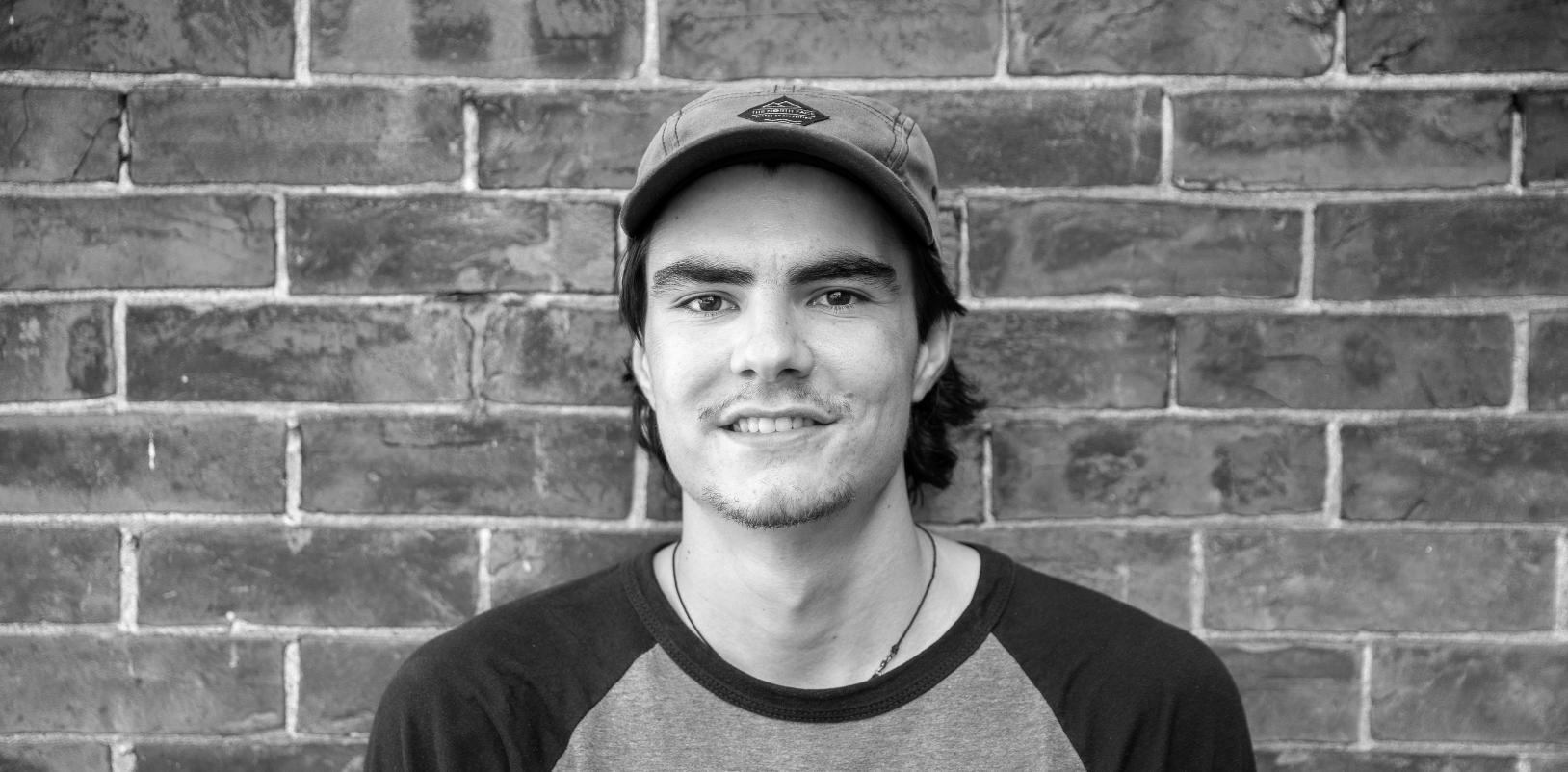
Coming from Laurier, I’ll say right off the hop that Queen’s seems to me a special place. I enjoyed my time in Waterloo, and I’ll forever be grateful for Laurier’s philosophy department, but goodness me is Kingston pretty.
I can’t stress this enough to my fellow Queen’s students: you’re so lucky to be here. I’m slightly envious especially of undergrad students who get four of the most fun and transformative years of their lives on this campus— especially since most university campuses don’t have waterfront breezes and 19th century architecture in abundance. I hope other students feel as grateful as I do to be studying here this year. Anything less is inexcusable. No matter how you feel about returning to campus or starting new at Queen’s this semester, I hope you’ll join me whenever you can to talk about philosophy and its applications in our world and lives.
If anything in this column strikes you as interesting, I encourage you to write a Letter to the Editor and send it to journal_letters@ams.queensu.ca.
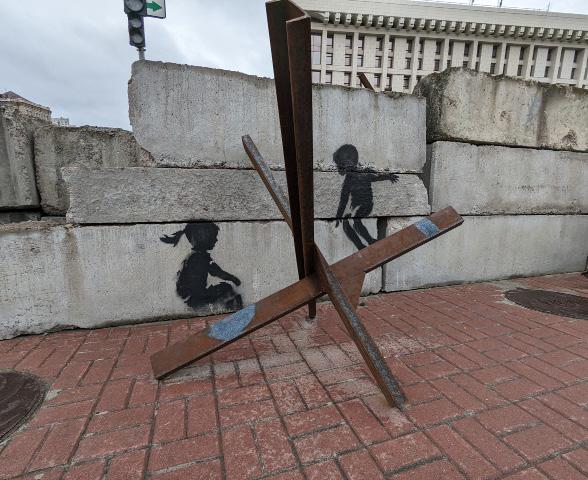
Faced with the grim spectacle of the Przemyśl Główny train station, I nervously checked my watch. It was nearly 1 a.m., and I was the lone holdout
buzz proved short-lived as I rapidly sobered to the fact that I was entering a warzone.
***
When I arrived in Kyiv, my guide awaited me outside my rental apartment in an SUV. Surveying his vehicle, I saw a bounty of medical supplies and body armour— reassuring oddities in a war-torn country. Our plan was to visit several liberated cities around Kyiv and the northeastern provinces.
occupants’ lives, I felt ashamed, like I was violating their privacy. I began questioning my motives for this journey.
***
By my last full day in Ukraine, I’d barely explored Kyiv. I set out to find the Dnipro River but found myself walking the narrow shoulder on the wrong side of the highway. Tired of sucking in diesel fumes, I welcomed the sight of a clearing in the forest to my right. Google Maps confirmed there was a landmark ahead, and it wasn’t long until my detour led me into a clearing to meet a piece of the Kyiv Fortress.
The formidable structure, sitting on a steep hill, is part of an old fortification built to protect the city in the 17th to 19th centuries. Without a soul in sight, it appeared both majestic and haunted.
I found a doorway and went inside. The fortress was dark, musty, and creepy as hell. A pentagram was spray-painted to my left, so I went right, whispering the Lord’s Prayer. I began scaling the dicey slope of dirt, bricks, and empty beer cans. I eventually exited through a small hole, only to find two figures struggling to hop a fence into another mysterious structure. Buzzing from my adventure in the lower wall, I introduced myself, hoping to join them.
As the two young men scrambled up the muddy gulley to greet
“denazification” of Ukraine. Though I’d heard this before, hearing it then sent me into a fit of laughter, as I imagined the prospect of three Nazis welcoming me, a black man, to liquor up with them.
As curfew approached, the trio walked me home. Outside my rental, the conversation took a sombre turn as they recounted their experiences during the invasion and how the war continues to impact their lives and outlook.
I asked about the war’s lingering effects on their lives in Kyiv, which have returned to a surprising normalcy. One recounted his worst memory, a low-flying Russian jet passing over his family’s home and his futile attempts to convince his mother, who didn’t want to leave his bedridden father, to seek shelter.
“I want to cry,” he said.
The others agreed. They said they share the feeling that their future is bleak, and their experiences have forged a profound resilience and awareness of the human condition at the cost of their youthful innocence.
The once-distant awareness of our very different realities began to set in. This had been an extraordinary encounter for each of us, yet our bittersweet goodbye contained the familiar awkwardness that concludes every one-night stand, platonic or otherwise.
The next day, on my train back
for the 11:30 p.m. train to Kyiv, which was heavily delayed, in true Eastern European fashion.
Boarding the train, I basked in alternating waves of exhilaration and relief. A journalist by declaration, but not credentials, I battled the feeling I wasn’t supposed to be there, and felt I was getting away with something.
The car was packed, mostly with women and children, their exhaustion evident. I hadn’t expected the trains into Ukraine to sell out. Several American volunteers helped direct passengers and refugees at the station, they told me this had been the norm for several months. With the intensity of aerial assaults easing, many were returning home, though this calm wouldn’t last long.
Across the aisle, a band of seven men seemed out of place. Laden with duffels and MultiCam MOLLE bags studded with tourniquets, I gathered they weren’t heading home. They slept with the intensity of the damned, their young faces hardened either by the heat of battle or the anticipation of it. My
My guide was seasoned, having spent years before the invasion working in Chernobyl, and briefly as a police officer. During the Battle of Kyiv, he joined his friends from the police force to assist with civilian evacuations. Now, he works for a humanitarian mine-clearing crew and runs press tours in his limited free time.
Our first stop was the site of a tank battle that occurred days into the invasion. Treading through the ghostly graveyard of Russian tanks, I stopped to look at one particularly twisted metallic tomb. I tried to imagine the crew’s final moments of panic and terror. Straining to commune with the spirits of the dead, I came up short. The scene felt spiritually inert.
Several hours later, we arrived in Borodyanka, where we pulled into a parking lot behind several apartment buildings. This area was the target of severe shelling during the war’s early days. While surveying the rubble, my attention was pulled in several directions. Staring at the relics of the previous


me, one slipped. A spurt from his large beer can splashed across his black trench coat and face, soaking the unlit cigarette dangling from his mouth. While he composed himself, the other offered me a beer. If anything, this trip had taught me to go with the flow, so I obliged.
The pair met at university. At 18 and 19, they’re young, and I’m the first foreigner they’d met. They invited me on a beer run, after which they planned to meet the drummer in their death metal band.
Having hardly eaten, the beer melted my inhibitions, and a day bender with complete strangers seemed like an appropriate way to descend deeper into the madness of this trip. Performing this universal ritual of youth bonded us as our ravings veered to and from the war. At one point, one of my companions mocked Putin’s deranged justification of the war as a
to Poland, I pondered the fate of these young men and Ukraine itself. As I returned to a world without the immediate threat of war, I couldn’t extricate myself from their story.
Returning to the UK, my head in a whirl, it took several weeks to sift through my confusion and post-trip hangover. While I went to Ukraine to see the reality of the conflict for myself, I left with more questions than answers.
Gratitude and guilt rarely coincide, but they did in the aftermath of my journey. Going to Kyiv offered me profound gratitude for the banality of life, but gave me guilt for leaving behind people and stories that left a deep impact on my soul. Take this as a reminder to cherish every heartbeat and to stand in solidarity with those who bear the weight of the tumultuous dance of history.
The Irpin Palace of Culture was the center of the city’s cultural life. PHOTO BY NICHOLAS GAKENA An abandoned tank sits in Kyiv. Graffiti in Kyiv depicts children playing. PHOTO BY NICHOLAS GAKENA